Visitors are drawn to Bordeaux, France for the wine since it is the second-largest wine-producing region in the world, but there are also plenty of things to do in Bordeaux that don’t involve wine. Only two hours from Paris by train, Bordeaux has the highest number of preserved historical architectural sites outside of the capital and its historic city center is a UNESCO Heritage Site. Combined with a diverse and youthful population, great food, fewer international tourists, lower prices, and a vibrant city life, it is easy to spend at least 3 days in Bordeaux.
Bordeaux is the capital of the Nouvelle-Aquitaine region in Southwest France and often considered a “little Paris” because of its similar 18th-century architecture, but also because of its cosmopolitan appeal. While it has an interesting history as part of the English territory for centuries, today Bordeaux feels 100 percent French. I fell in love with Bordeaux after spending five days in the city and then another week exploring the region on my Bordeaux river cruise with AmaWaterways.
But if you want to see the highlights of the city, including some wine and food tasting, you can easily fit this all to just three days in Bordeaux and build in more time if you want to take day trips.
If you are planning a tri, in this Bordeaux itinerary, I will walk you through how to get to Bordeaux, the best things to do in Bordeaux, where to stay in the city, some recommended restaurants, and day trip ideas.
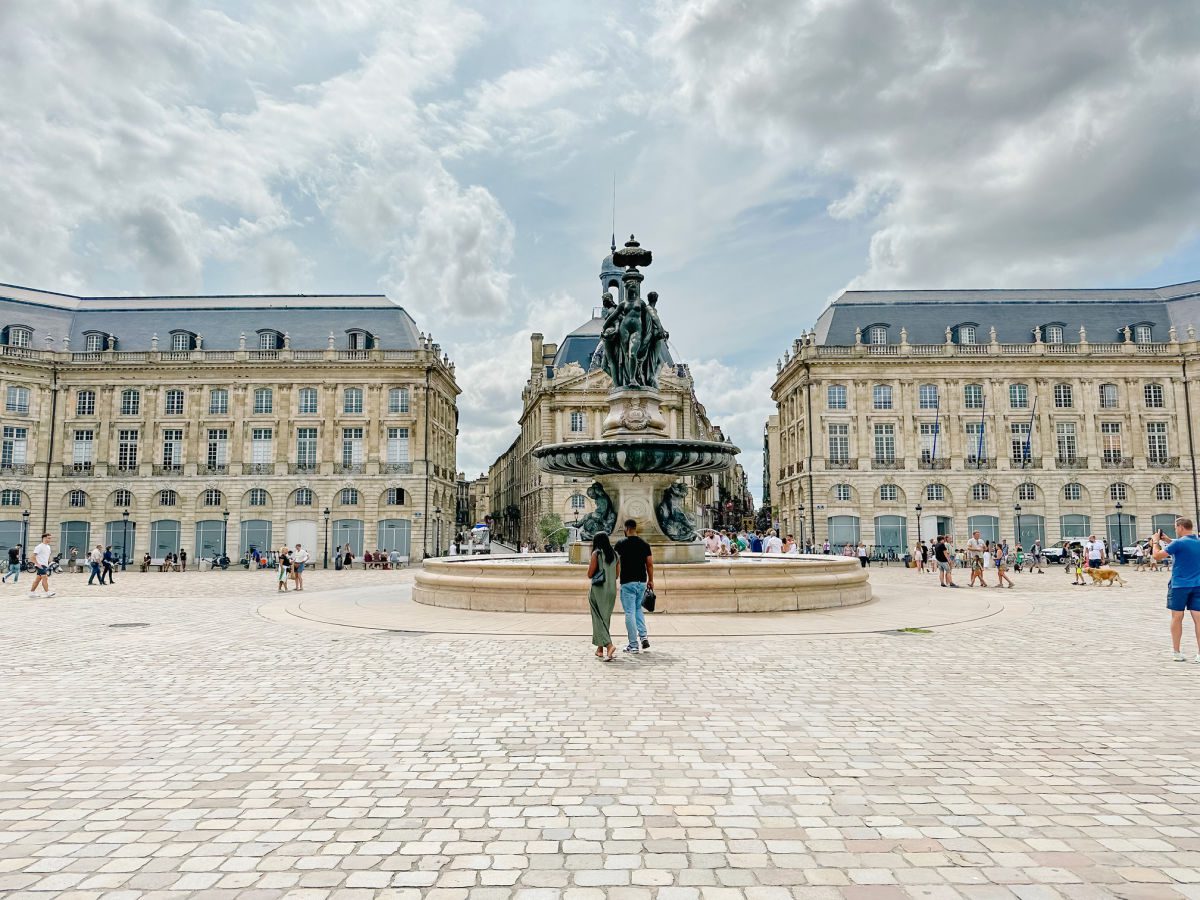
3 Days in Bordeaux Itinerary
Note: This post may contain affiliate links. If you click a link and make a purchase, I may receive a small commission. All opinions are my own.
I’ve highlighted the most important points of interest on the map below to help you plan your visit. In addition, I have grouped these attractions below into a sample itinerary for three days in Bordeaux:
Map courtesy of Google My Maps
Day 1 in Bordeaux
On your first day in Bordeaux, it is great to get a feel of the city through a self-guided walking tour of the following sights and attractions. This list is designed to take you on a somewhat large loop through most of the city center, passing by the main Bordeaux highlights. Alternatively, you could take a bike tour or guided tour by side car if you don’t want to do a lot of walking.
Walk through Grosse Cloche
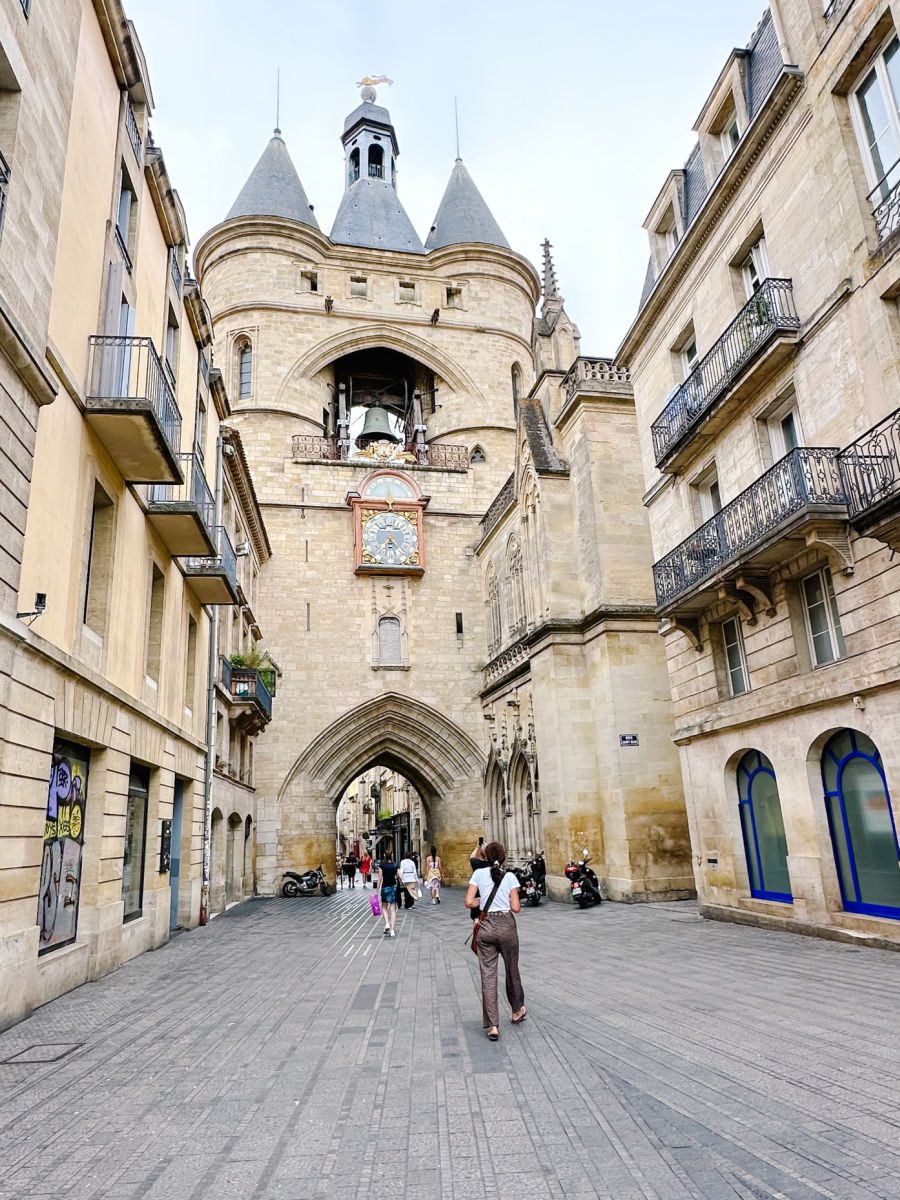
The Grosse Cloche (which means Big Bell), is one of the most recognizable symbols of Bordeaux. This city gate dates back to medieval times when it welcomed a steady stream of St. James’ Way pilgrims passing through Bordeaux en route to Santiago de Compostela. Today the bell tower houses The Grosse Cloche, which was cast in 1775. The massive bell was once used to signal curfews, warn of fires, and announce important events to the citizens of Bordeaux. Today, the Grosse Cloche continues to chime on special occasions.
On the south side of the gate, you will find a clock and a dial that was originally built between 1756 and 1759 to the designs of the mathematician and astronomer Paul Larroque. On the north side of the gate, you will find a sister clock face that displays the different phases of the moon during the lunar month and two reproductions of the city’s coat of arms. Just inside the gate, be sure to stop for a traditional cannelle, a pastry created in Bordeaux, at Cassonade.
Pass by Porte d’Aquitaine
In 1154, Eleanor of Aquitaine married Henry Plantagenet, who later became King Henry II of England, bringing the Duchy of Aquitaine, including Bordeaux, under English control. Eleanor of Aquitaine played a significant role during this time as she was a powerful and influential figure in both English and French courts.
Tensions between the English crown and the French monarchy eventually led to the Hundred Years’ War (1337-1453), during which Bordeaux switched allegiances multiple times, which culminated with the French reclaiming Bordeaux from English rule in 1453. Throughout the city, you will see many references to Eleanor of Aquitaine and Nouvelle-Aquitaine, as the region is now called.
The Porte d’Aquitaine, also known as the “Gate of Aquitaine,” is one of the many beautiful city gates and archways that once served as a primary entry point to the city. Constructed in the 18th century, its Neoclassical design and elegant façade are a testament to the architectural trends of the time with intricate detailing and sculptures.
Browse the Marché des Capucins
The Marché des Capucins is the main market for the city of Bordeaux, open all year from Tuesday through Sunday. You will find stands offering fruit, vegetables, meat, cheese, coffee, seafood, and other delicacies. If you are staying in an Airbnb, this is a great spot to stock up if you are cooking your own meals. However, there are also prepared foods as well as restaurant stalls so that you can enjoy a meal on-site.
Visit Basilique Saint Michel
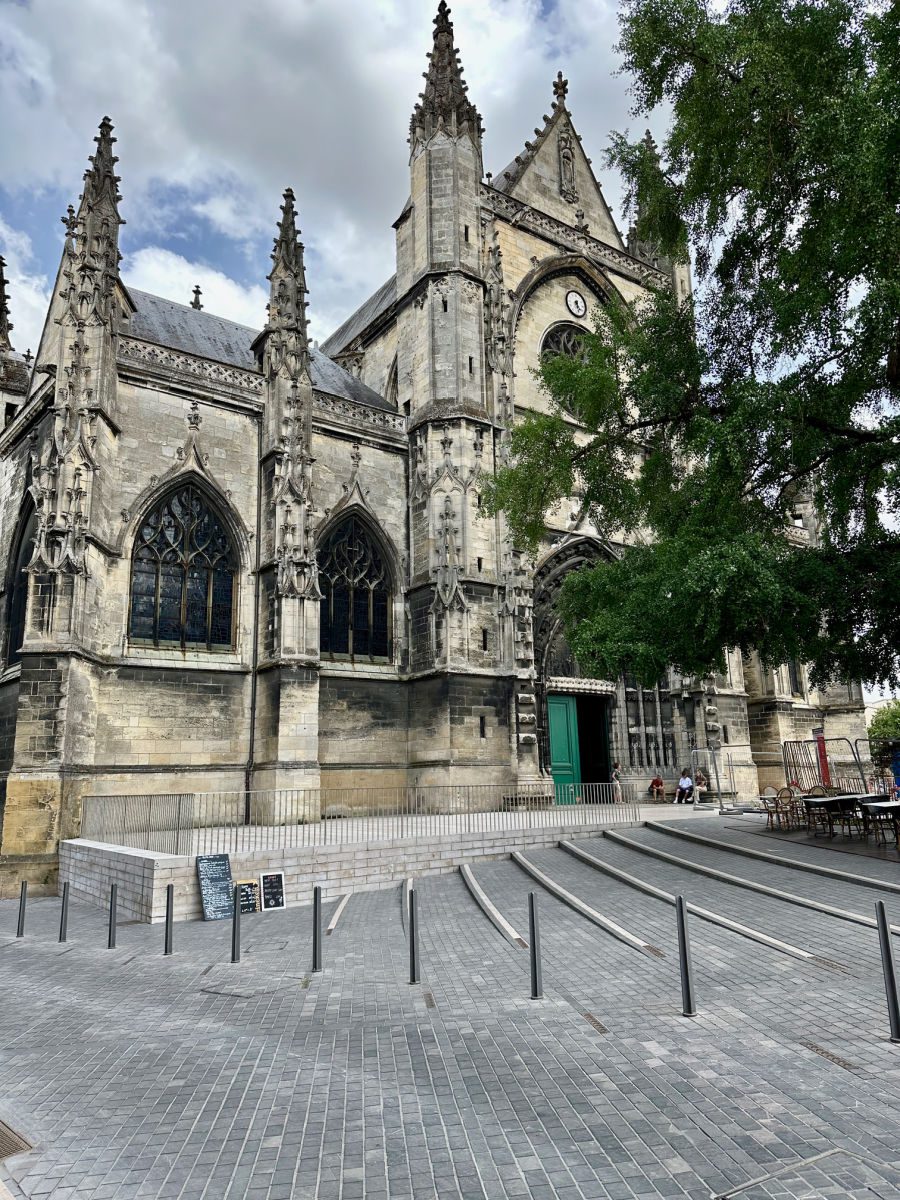
Basilique Saint Michel is a Gothic-style church built between the end of the 14th and 16th centuries and part of the Routes of Santiago de Compostela and a UNESCO World Heritage Site. The spire of the Basilica dominates the skyline and you don’t even realize how large the Basilica is until you see the skyline from a distance. In addition to visiting the church, visitors can typically climb the narrow steps of the bell tower (although it was under refurbishment when I visited.)
Take photos by the Bordeaux Sign
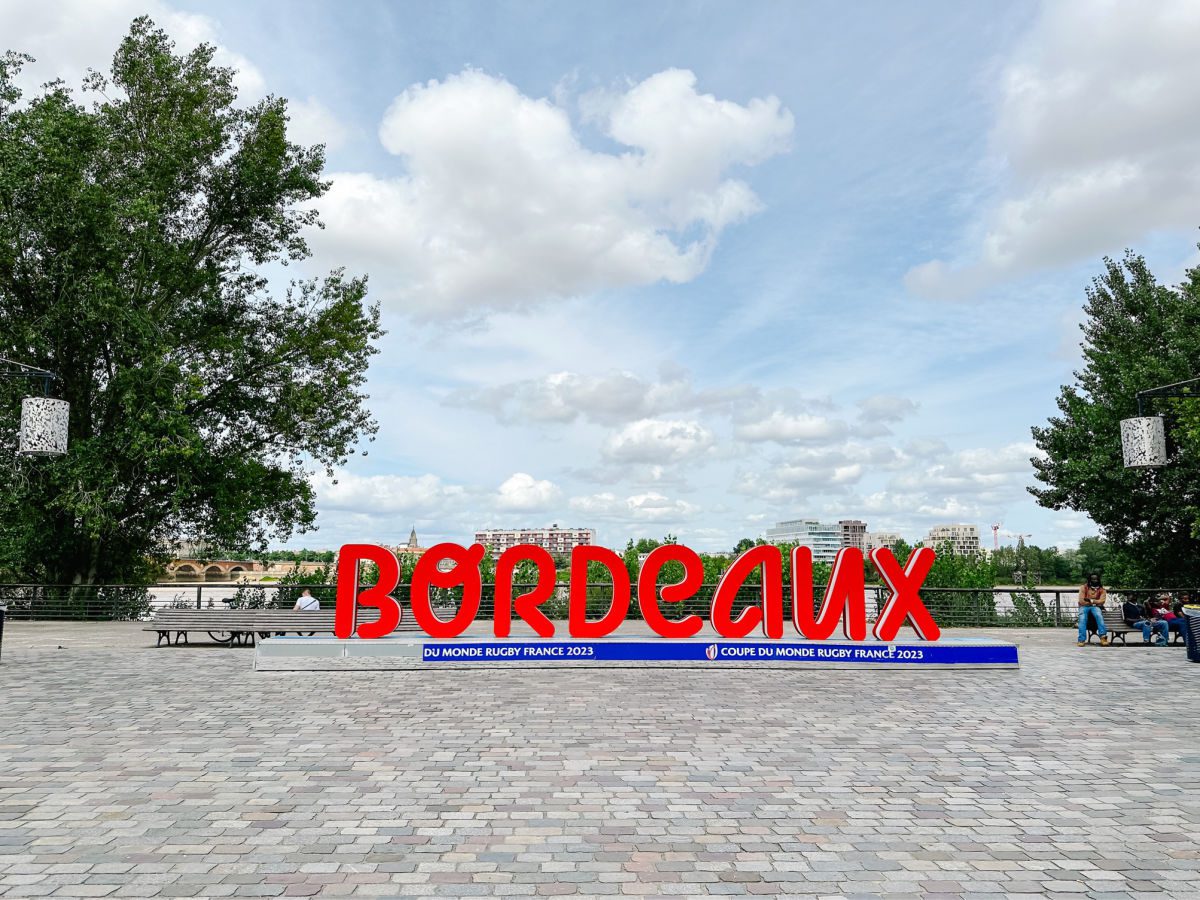
From Saint-Michel, if you walk along the Garonne River, you will soon come to the Bordeaux sign, which makes a good photo memory from your visit. This area is also used by skateboarders and given the smell of weed in the area, I would be careful who you ask to take your photo (maybe stick to a selfie?).
Walk across the Pont de Pierre Bridge
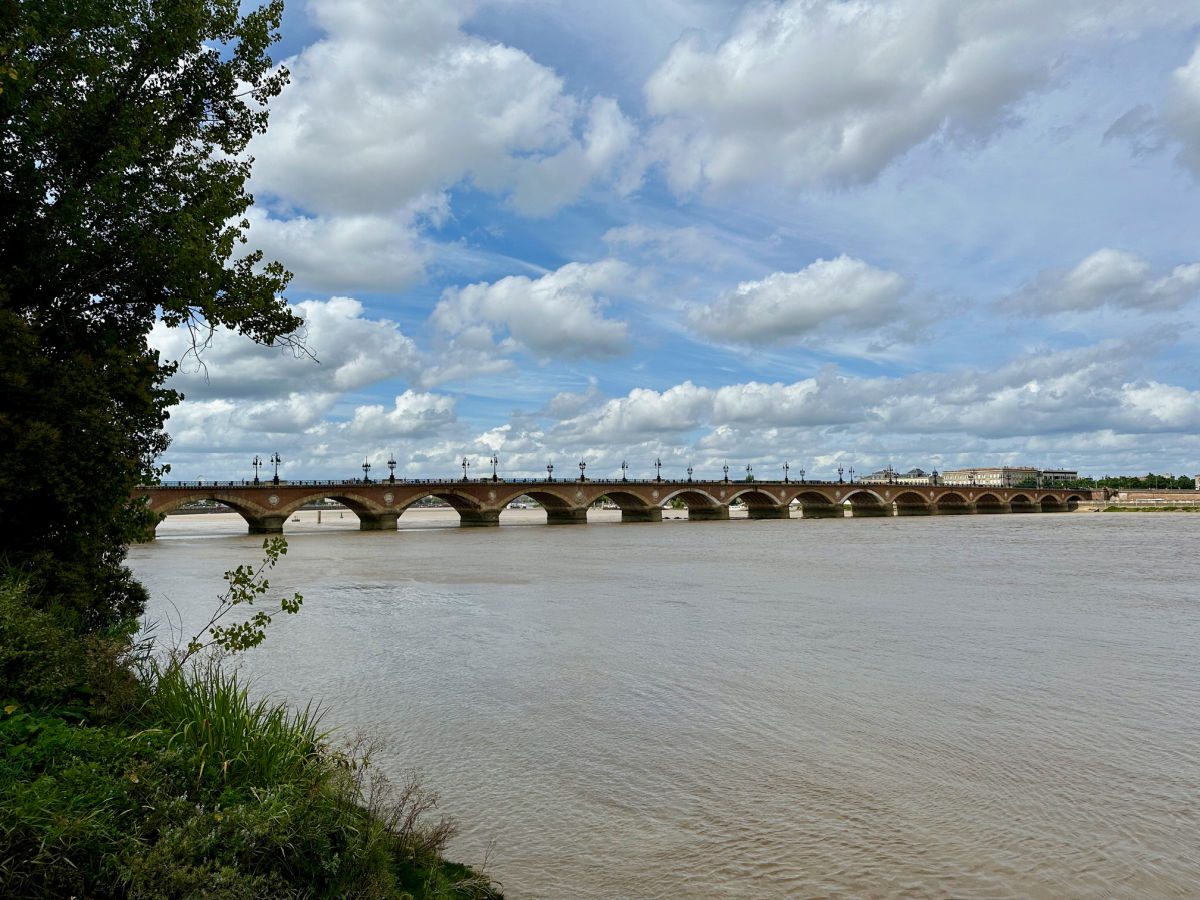
The Pont de Pierre, or “Stone Bridge”, is the oldest bridge in Bordeaux, connecting the left bank of the Garonne River to the right bank Quartier de la Bastide. It is the bridge that you see on many postcards and photos from Bordeaux. It is especially pretty when it is lit up at night.
Take photos of the Porte Cailhau
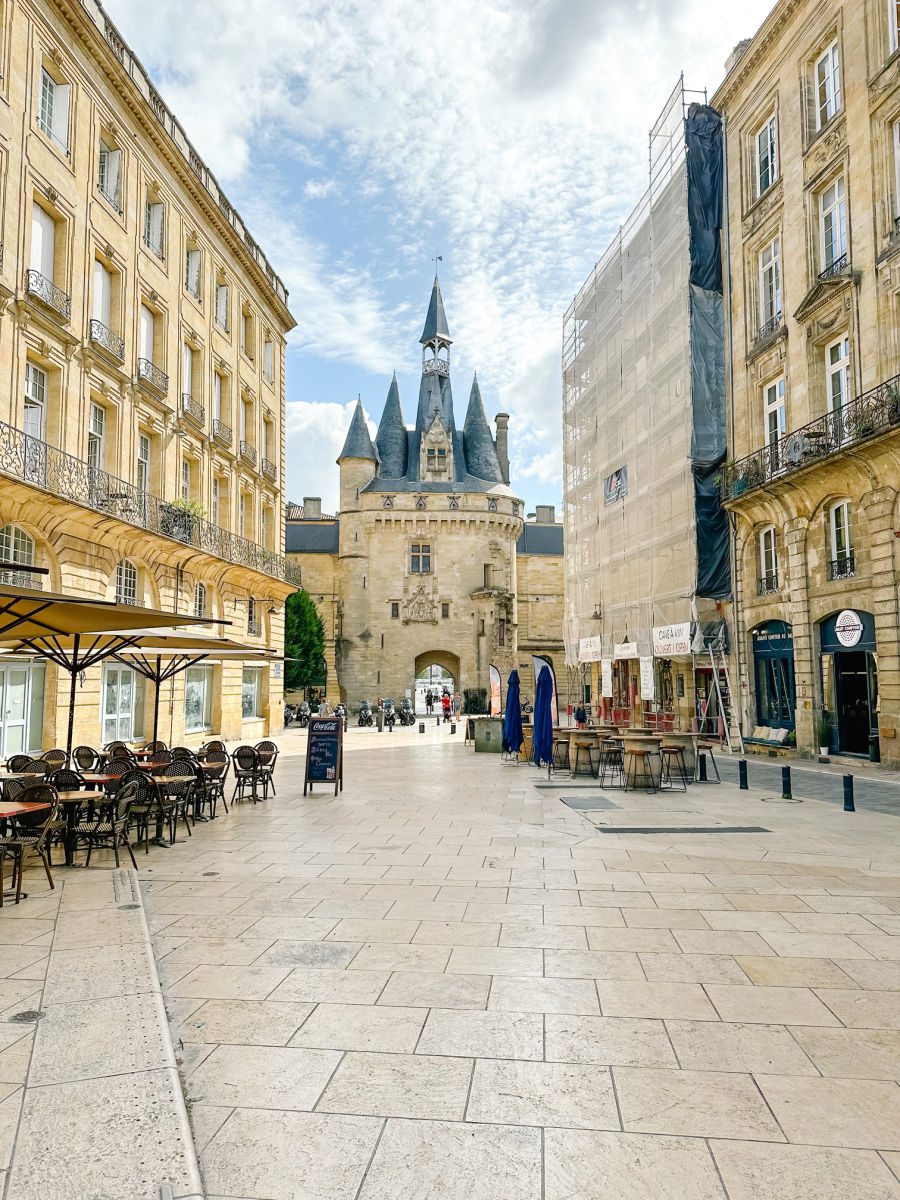
Porte Cailhau is one of my favorite spots in the city as the area around the gate is so lively and bustling with positive energy. The monument dates back to 1494 and it was built to commemorate Charles VIII’s victory at Fornovo, Italy and his likeness decorates a niche on the riverside and a notice asks visitors to pay attention to the lintel and reminds them that Charles VIII died from walking quickly into just such a lintel.
Visitors can climb the thirty-five meter tall monument and admission is free on the first Sunday of each month.
Window shop along Rue Saint Catherine
Rue Sainte-Catherine is one of the most famous streets in Bordeaux and one of the longest pedestrian shopping avenues in Europe, spanning over 1.2 kilometers in length. It can be a bit touristy, offering a diverse array of shops, boutiques, cafes, and restaurants. If you are looking for more upscale designer shops and boutiques, hold off on your shopping until you hit the Golden Triangle area later.
Visit the Cathedral Saint Andre
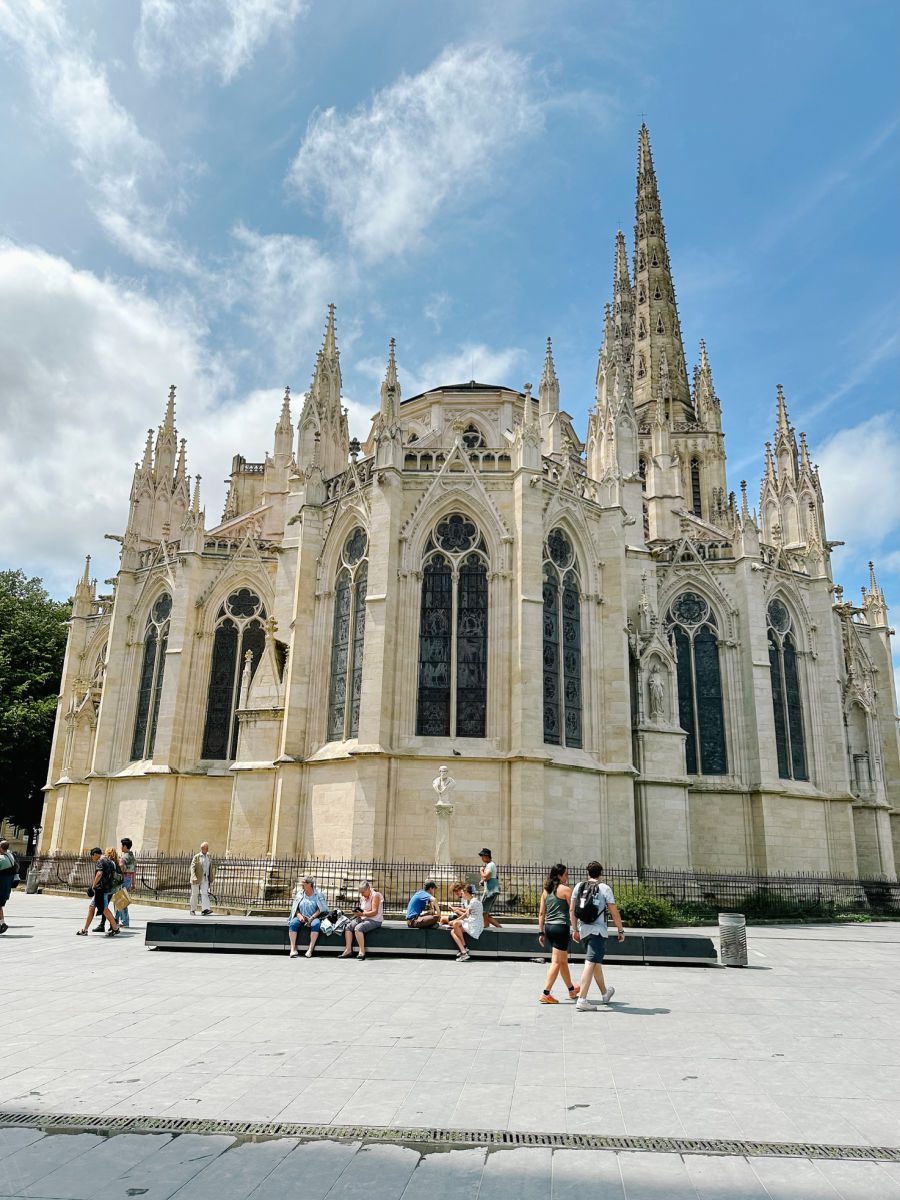
Cathédrale Saint-André was built over several centuries, starting in the 12th century, and has a blend of architectural styles that encompasses Romanesque and Flamboyant Gothic elements. The cathedral has witnessed numerous historical events, including the first wedding of Eleanor of Aquitaine to King Louis VII of France. Visitors can walk through the Cathedral to take in its impressive features, such as intricate stained glass windows that bathe the nave in a kaleidoscope of colors, and the “Gates of Paradise,” an ornate entrance adorned with intricate biblical scenes.
The cathedral’s bell tower stands adjacent to the main structure so as not to impact the structural integrity of the Cathedral (much of this area was swampland before the Dutch arrived). For a panoramic view of Bordeaux’s cityscape, you can climb the tower’s spiraling staircase of 231 stairs.
Nearby you will also find the Hotel de Ville city hall of Bordeaux and across the street is a small park where you can also often find a book market.
Walk Past Porte Dijeaux
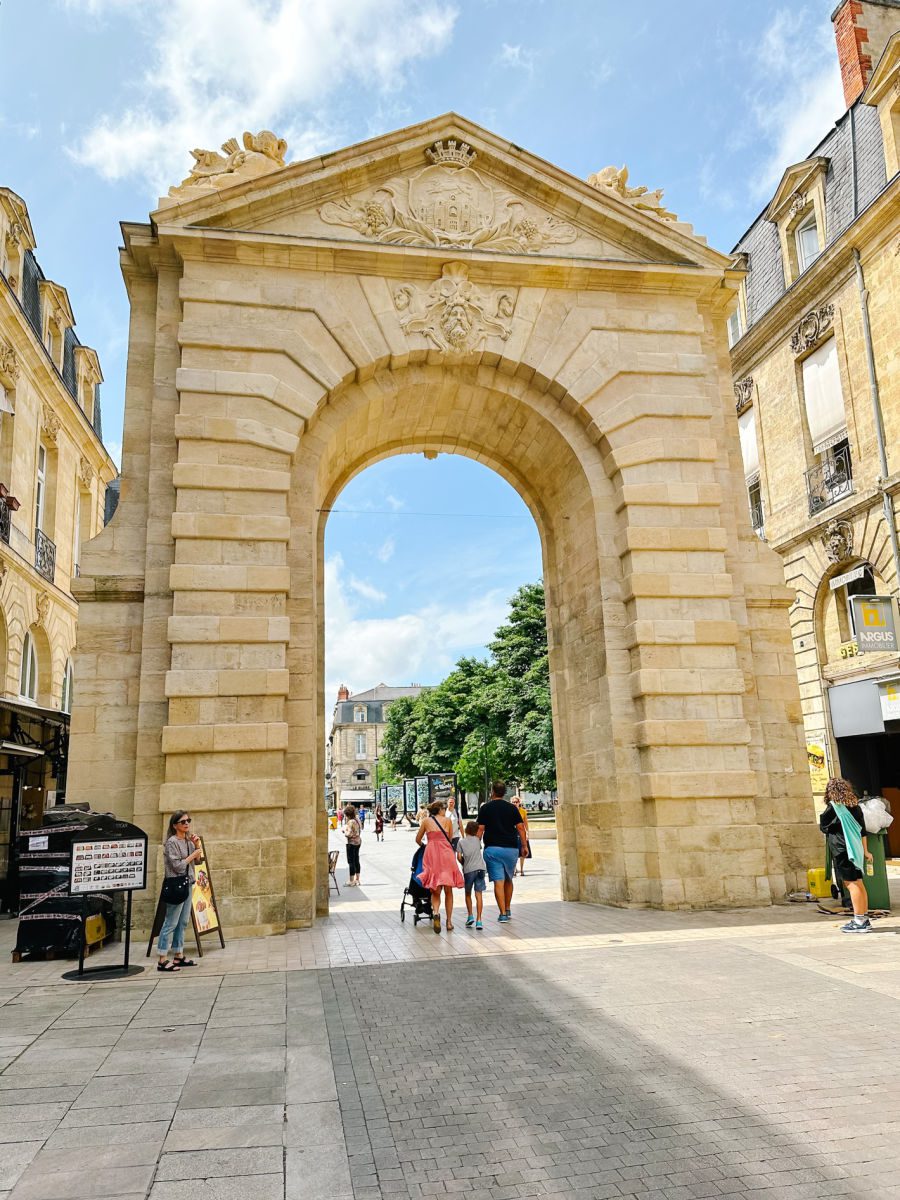
From the Cathedral, walk up Rue des Remparts, past galleries and boutiques to Porte Dijeaux. The streets that run parallel are also lined with cute shops. Porte Dijeaux is another elegant archway that once marked the entrance to the medieval town and dates back to the 1700s with a Neoclassical design and intricate carvings. The area surrounding the gate has a vibrant blend of contemporary shops, charming cafes, and boutiques and is filled with locals in the evenings.
Shop in the “Golden Triangle”
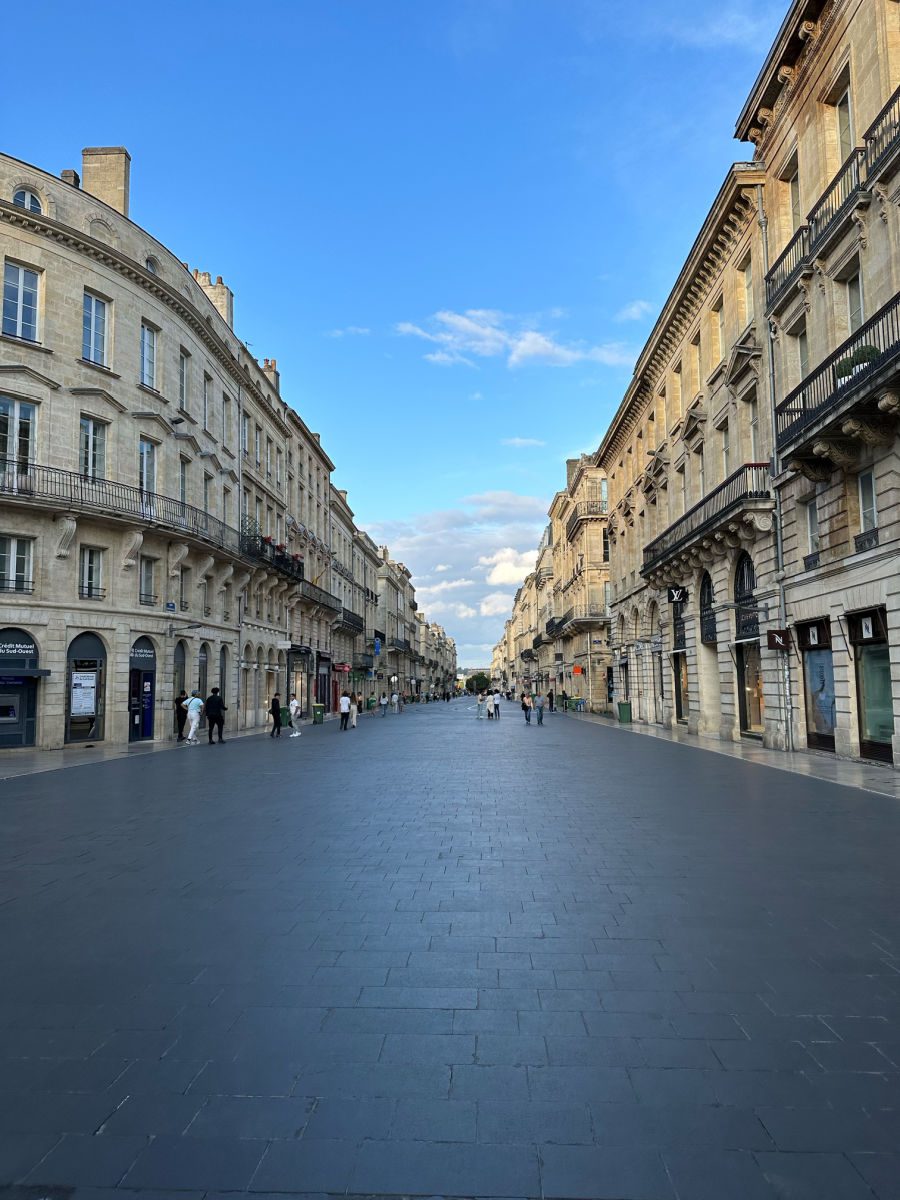
The “Golden Triangle” in Bordeaux refers to an area that is known for its luxury shopping, upscale boutiques, and elegant surroundings. This district forms a triangle shape, hence the name, and is bounded by three main streets: Cours de l’Intendance, Cours Georges Clémenceau, and Allées de Tourny.
See the Grand Theater
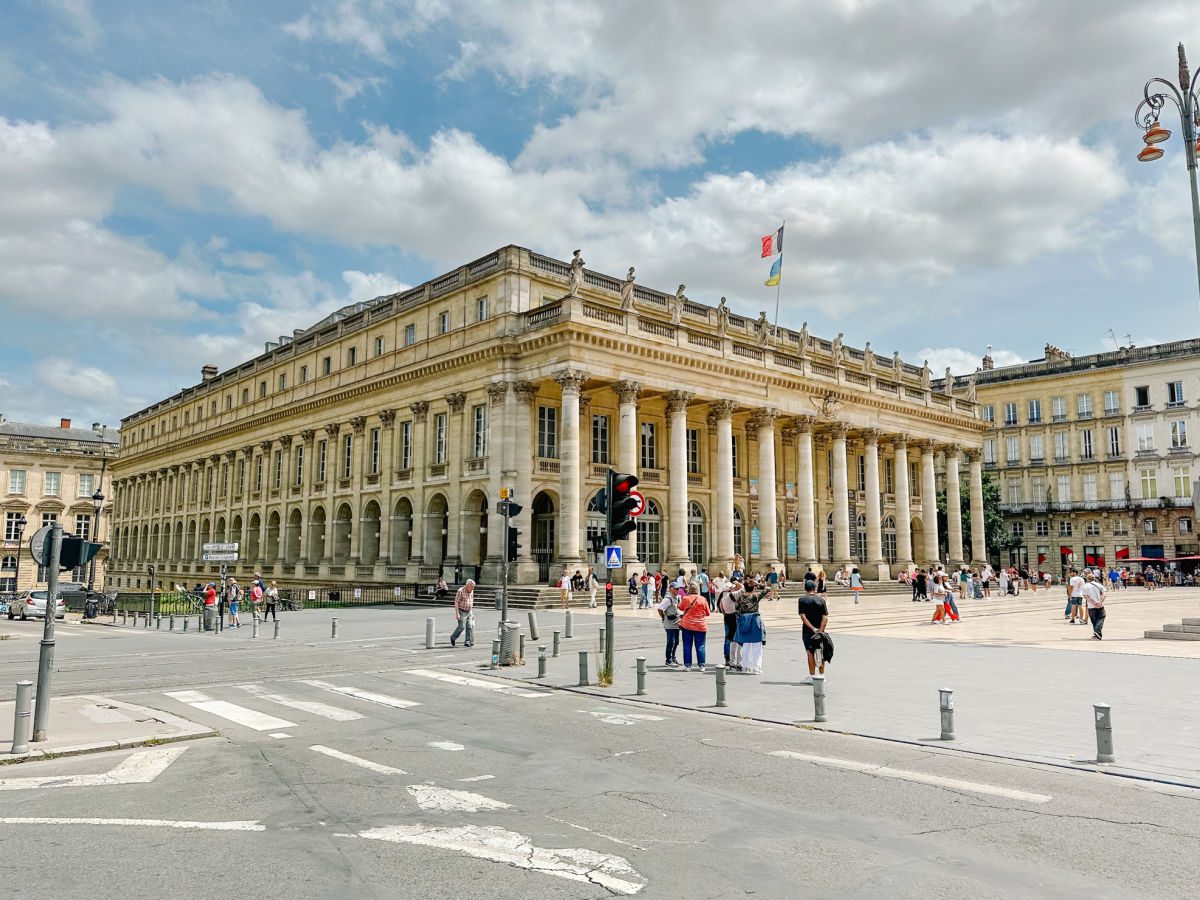
Walk down the wide Cours de l’Intendance to the National Opera of Bordeaux at the Grand Théâtre de Bordeaux. This architectural masterpiece stands as the cultural heart of the city. Designed by architect Victor Louis and completed in 1780, this neoclassical building has a stunning façade, adorned with Corinthian columns and ornate sculptures.
Inside, the theater showcases an array of operas, ballets, plays, and musical performances, but even if you don’t get tickets to a performance, you can still take a guided tour. The Place de Comedie in front of the theater is a beautiful square and nearby, you can take a ride on the Carousel Palace 1900 or hop on board the Petit Tourist Train.
Visit Place des Quinconces
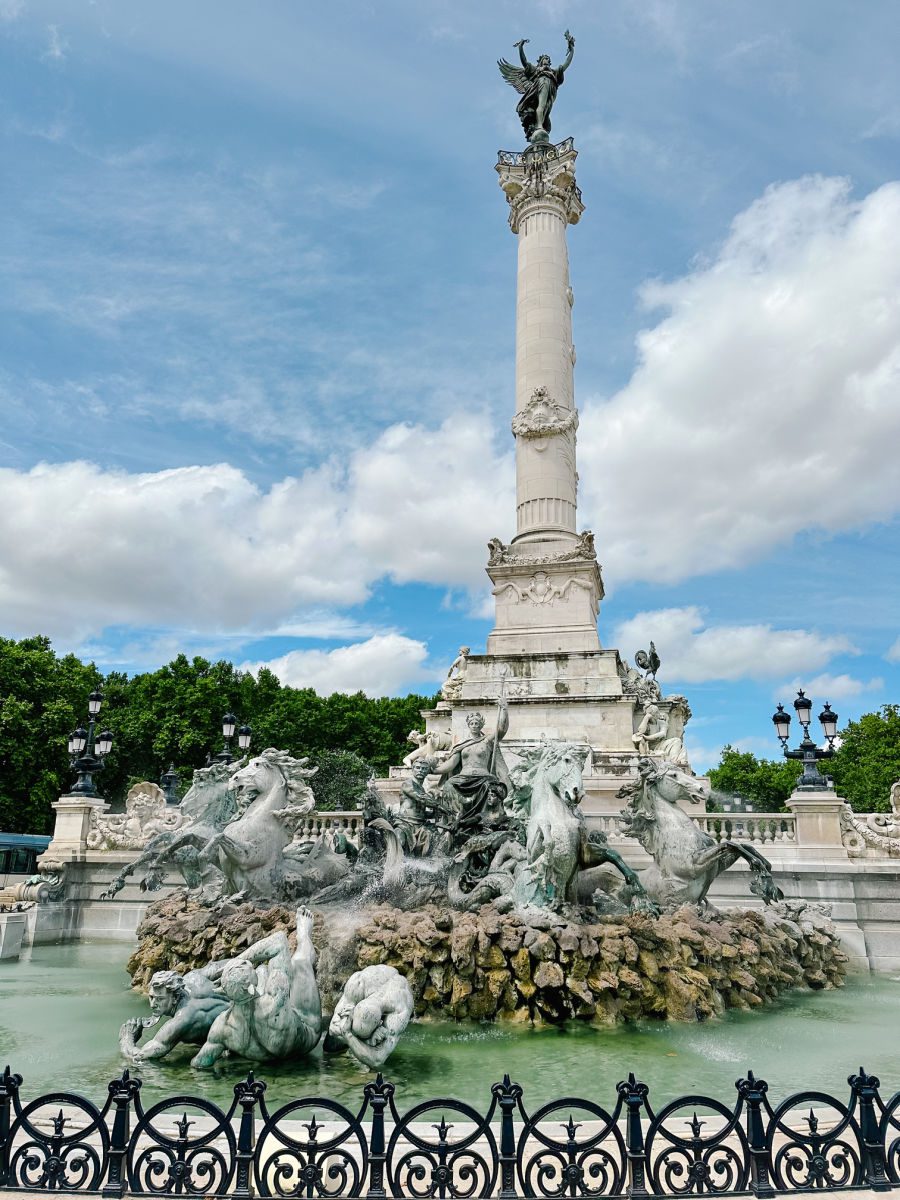
As you walk from the Opera House to the Place des Quinconces, you will pass by the Bordeaux Tourist office, which is a good spot to stop in to ask questions, pick up a map, or purchase a Bordeaux City Pass. Hop on and hop off busses also leave from here.
Soon you will arrive at Place des Quinconces, a sprawling square in Bordeaux, that is home to outdoor concerts, festivals, and cultural happenings. At its heart lies the Monument aux Girondins, a towering fountain adorned with sculptural representations of characters from the French Revolution. Closer to the river, you will find a towering Ferris wheel that offers panoramic views of Bordeaux.
Walk Along the Garonne River
Once you arrive at the Garonne River, turn right to loop back towards the Pont de Pierre. Be careful when crossing bike lanes because bikers have the right of way and always be sure to look for oncoming trams when crossing the tracks.
See the Miroir d’Eau in Place de la Bourse
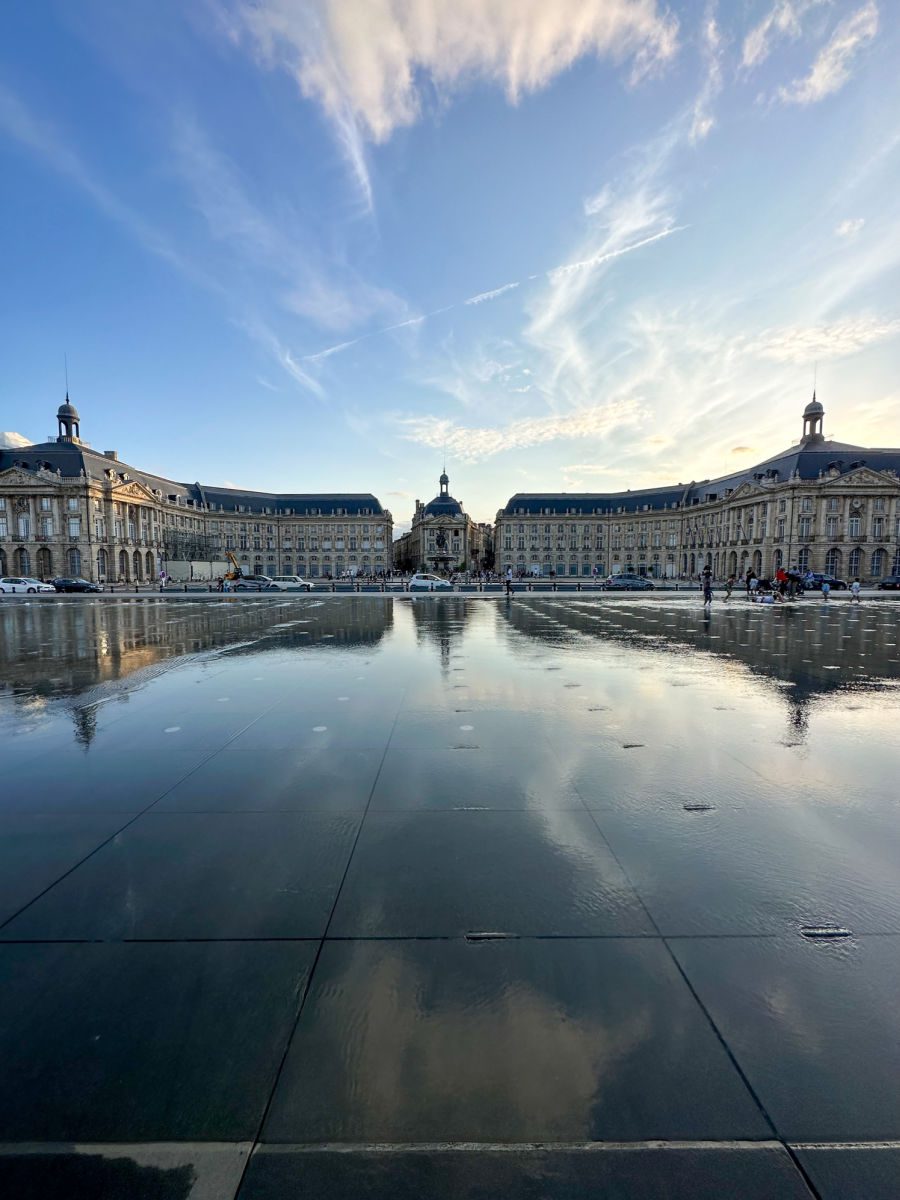
Soon you will arrive at the Miroir d’Eau, the most famous tourist attraction in Bordeaux and portrayed in many pictures of Bordeaux. The Miroir d’Eau, or “Water Mirror,” is a large reflecting pool. Just be aware that the pool gently fills and then recedes and kids love to walk through the cool mist and play in the water, so it is hard to capture a photo of it truly reflecting the Place de la Bourse across the street unless you get there very early in the morning. Otherwise, there are always ripples in the water from people, even if the fountain is not running at the moment. It is still a fun spot for locals and tourists to gather and relax.
By this time of the day, you will have done a lot of walking and probably be eager to get off your feet and relax for a while. But don’t worry, there are many more things to do in Bordeaux over the next couple of days.
Day 2 in Bordeaux
On your second day in Bordeaux, I would suggest diving deeper into the city’s food scene and exploring more of the area north of the city center.
Take a Food Tour
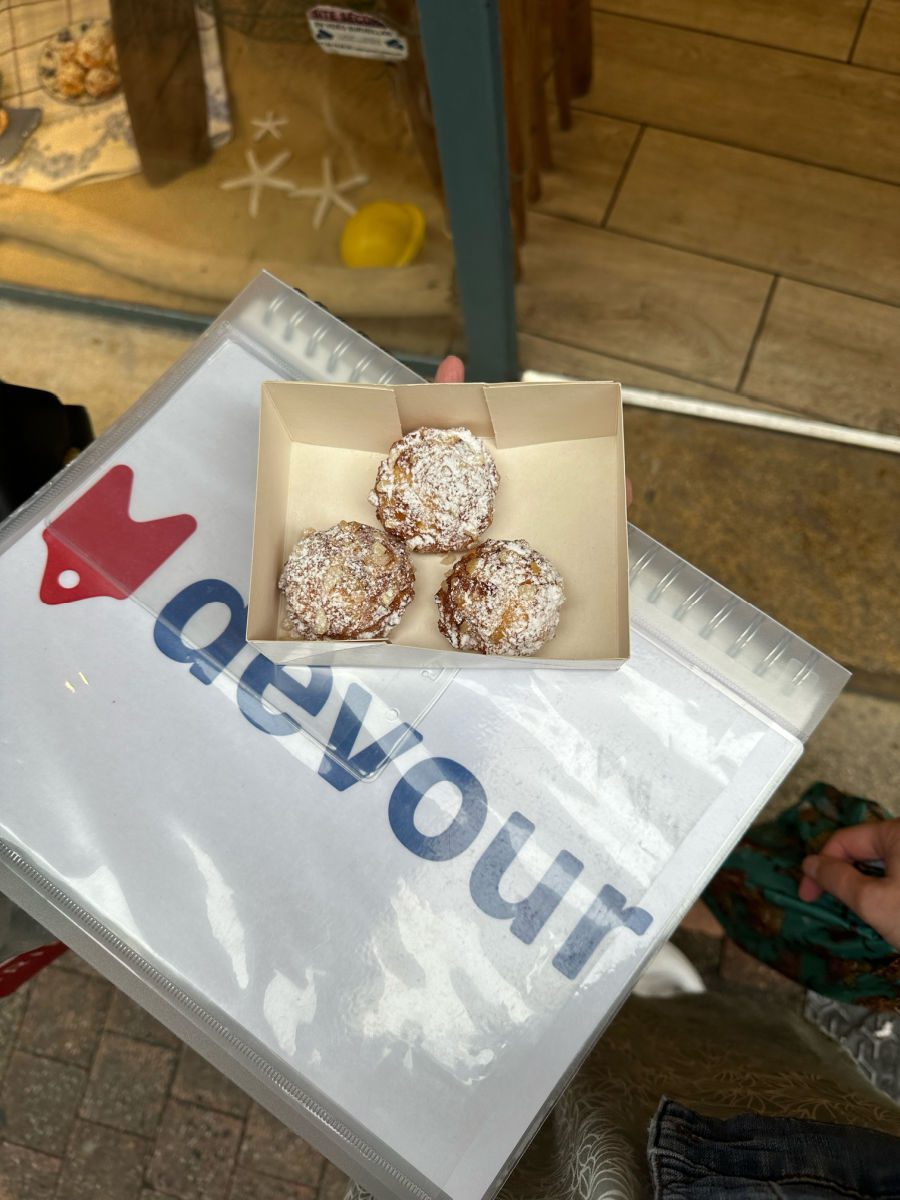
My favorite way to explore a new city is through a food tour. After thoroughly enjoying a food tour with Devour Tours in Paris, I knew that I had to sign up for the Devour Tours Ultimate Food Tour in Bordeaux as well. Over the course of three hours, we tasted cannelles, chocolatines, croissants, Croque Monsieur, local cheeses, hand-crafted chocolates, and cream-filled choux pastries, and finished up with a fantastic wine tasting. My tour guide did an excellent job of mixing in local history and main sights into our food tour as we walked through the city.
Because I am such a foodie, I also took a tour of the best boulangeries and patisseries in Bordeaux, which was surprisingly filling and offered a great perspective on many different neighborhoods throughout the city.
See the Palais Gallien
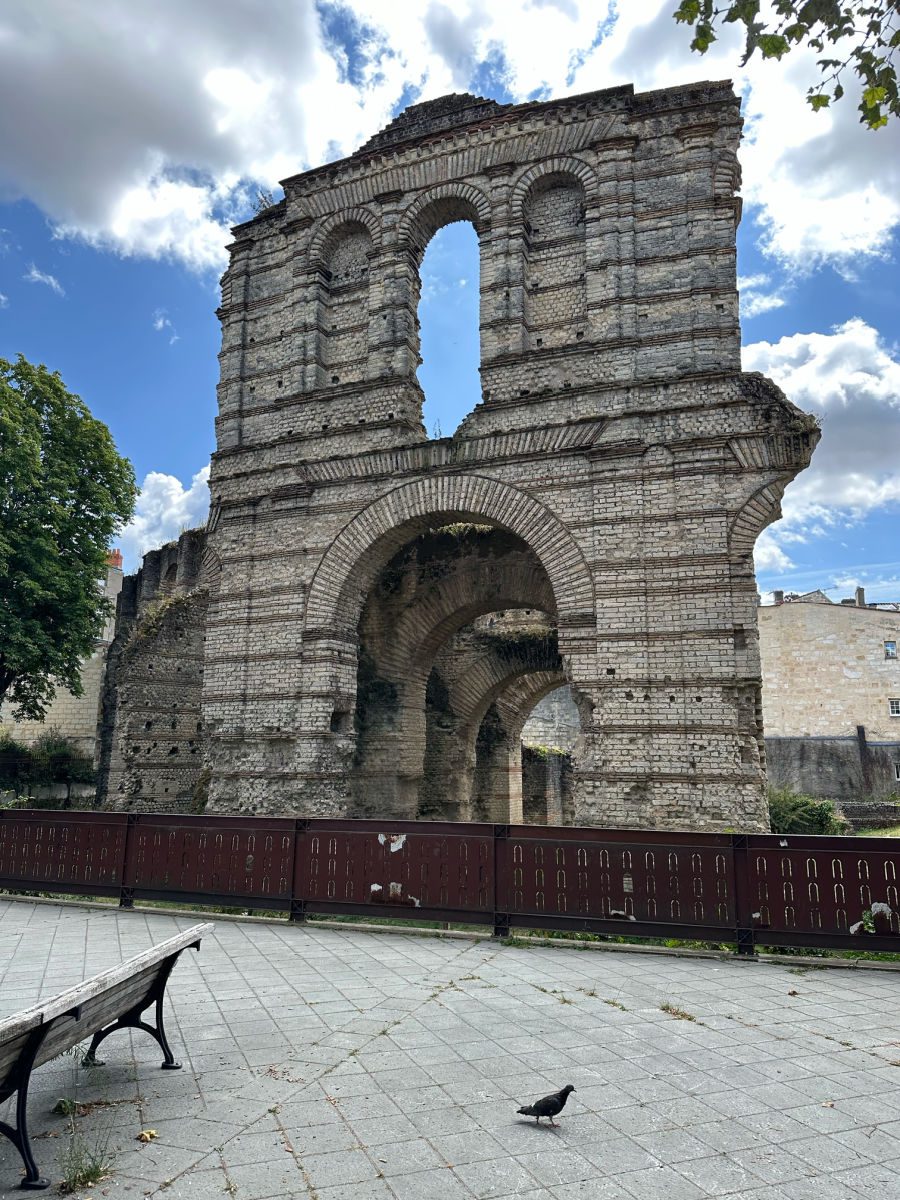
If you want to see evidence of Ancient Roman influence on the area, take a walk around Palais Gallien. Built during the Roman era in the late 2nd century AD, this was once a majestic amphitheater used for gladiatorial contests and other forms of entertainment. As one of the city’s oldest surviving structures, today much of the amphitheater has been dismantled for its stones and materials, leaving only remnants. While the original structure is long gone, you can still stroll through its ruins and appreciate the historical significance of the place.
Walk through the Jardin Public
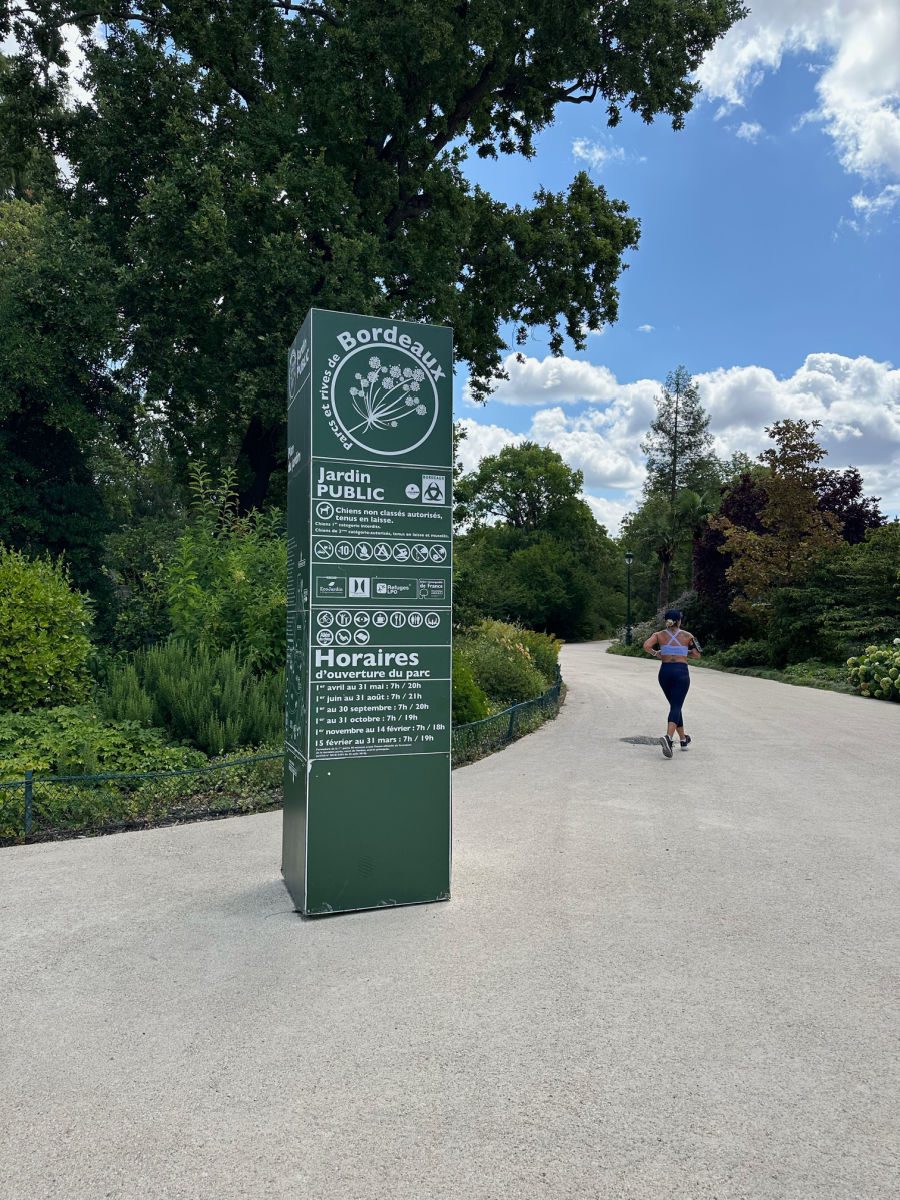
For a lovely spot of green in the middle of Bordeaux, take a stroll through the Public Garden. There are 11 hectares of grass, trees, flowers, and plants to explore, along with a children’s playground if you are visiting with kids. The park is surrounded by beautiful townhomes and is also home to the famous “Guignol Guérin” puppet show.
Explore the Chartrons Neighborhood
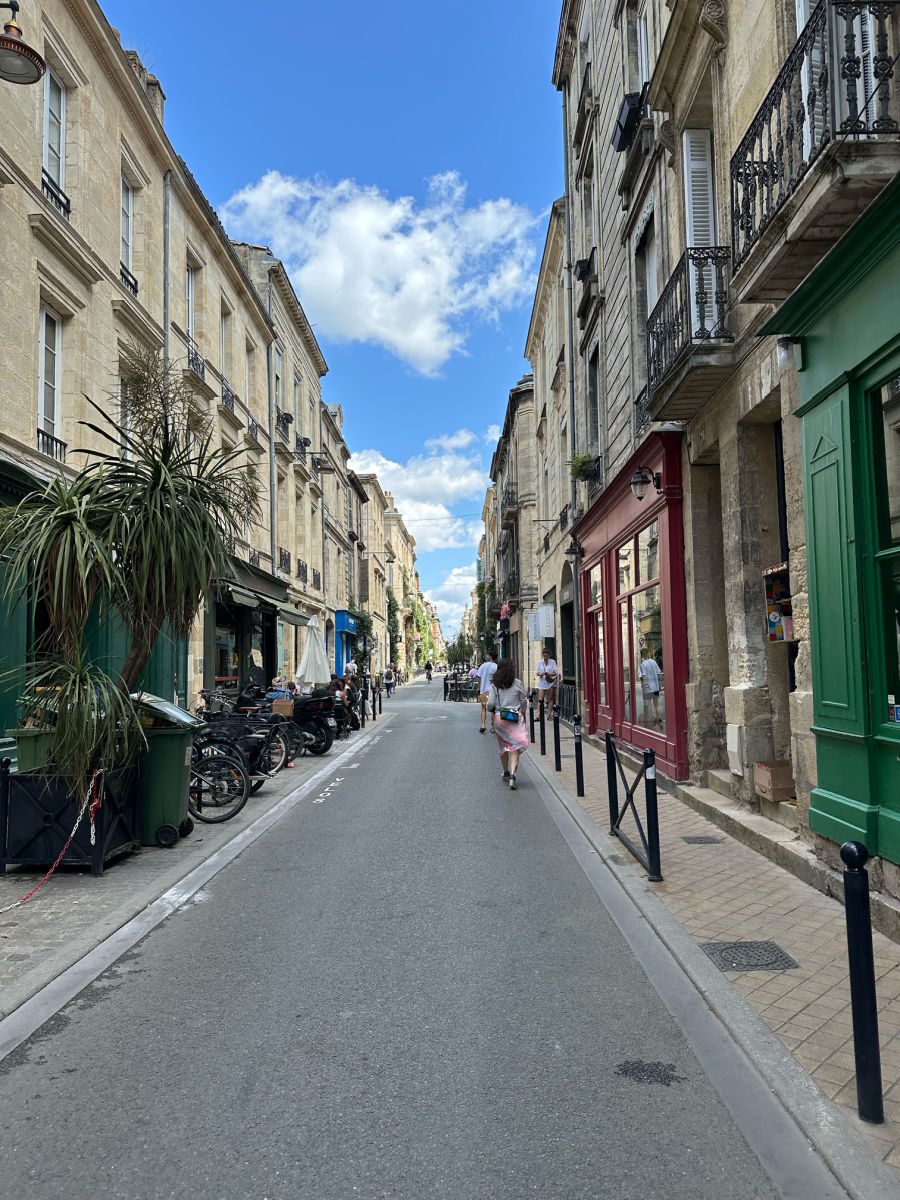
The Chartrons neighborhood is where what they call the “bo bo” (bohemian bourgeois) live, which to Americans is something like the “yuppies” or young urban professionals. Known as the historic wine merchant district, Chartrons exudes a unique old-world charm, with its cobblestone streets and well-preserved 18th-century architecture. One of the most famous sights here is the Église Saint-Louis-des-Chartrons, an elegant Neo-Gothic church.
Another highlight not to be missed is the Marché des Chartrons, a bustling market that offers a delightful array of fresh produce, gourmet food, antiques, and crafts. At night, sidewalk cafes surround the market and it is a hub of activity. The main thoroughfare, Rue Notre-Dame, is lined with quaint boutiques, vintage shops, and art galleries. For dining, the area around Rue de la Course boasts a diverse selection of restaurants, bistros, and cafes.
Take a Sunset River Cruise
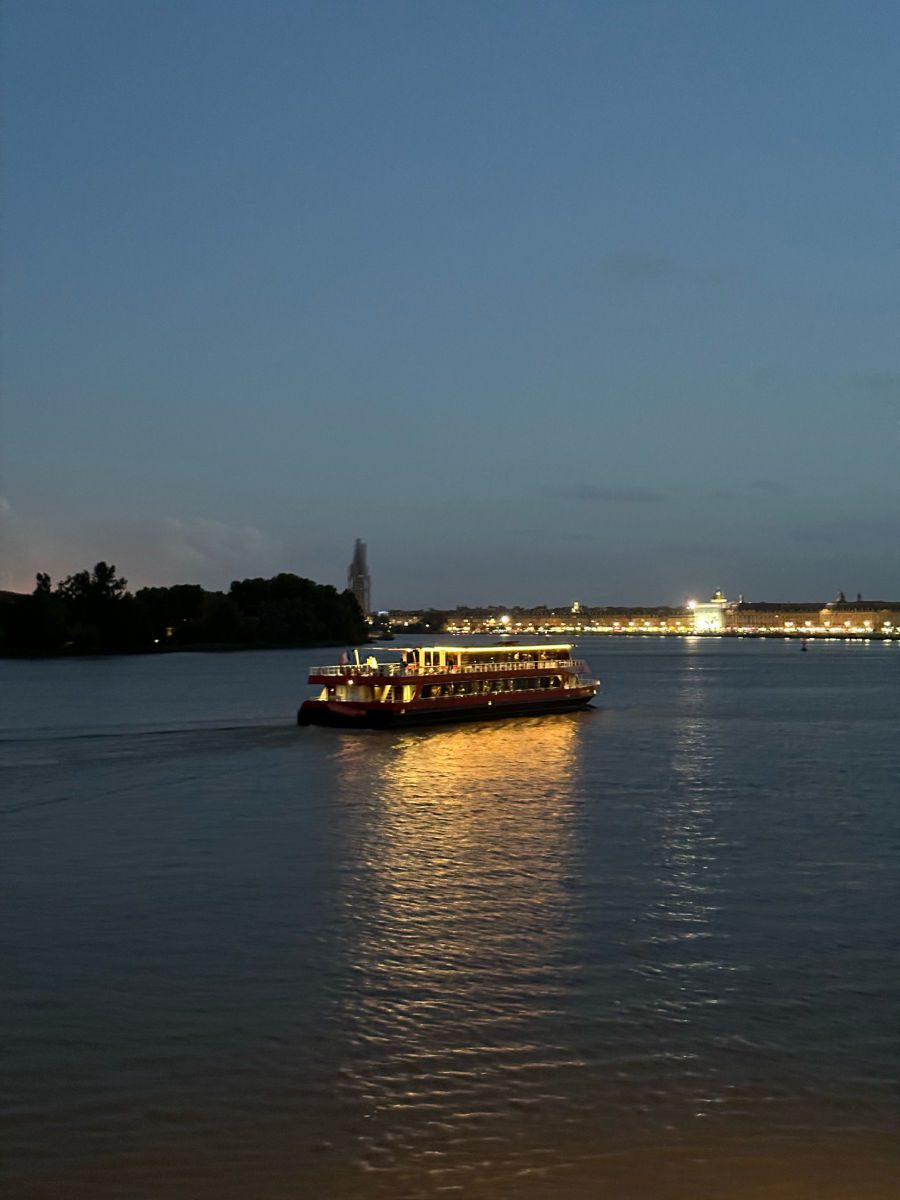
If you aren’t jumping on a weeklong Bordeaux river cruise like I did, you should at least take a short cruise on the Garonne River and sunset is an ideal time when you can see the city illuminated as the sun goes down. You will also pass by the architectural wonder of the Pont Jacques Chaban Delmas bridge, which rises in the middle to allow large ocean liners access to Bordeaux. You can opt for an evening cruise with an aperitif or go for a full dinner cruise.
Day 3 in Bordeaux
If you are taking a river cruise from Bordeaux, these next attractions will likely be part of your official excursion options. On our AmaWaterways river cruise, we had the option of a bike tour or a walking tour of Bordeaux in the morning, both of which ended with a tour and tasting of the Les Halles de Bacalan market. And in the afternoon, we could choose from either the Cité du Vin or the Bassins des Lumiéres.
Since I really wanted to see both, I visited the Bassins des Lumiéres on my own and the Cité du Vin as part of the cruise excursion. To be honest, I liked the Bassins des Lumiéres better but that was very subjective as not everyone I talked to felt the same.
Visit Bassins des Lumiéres
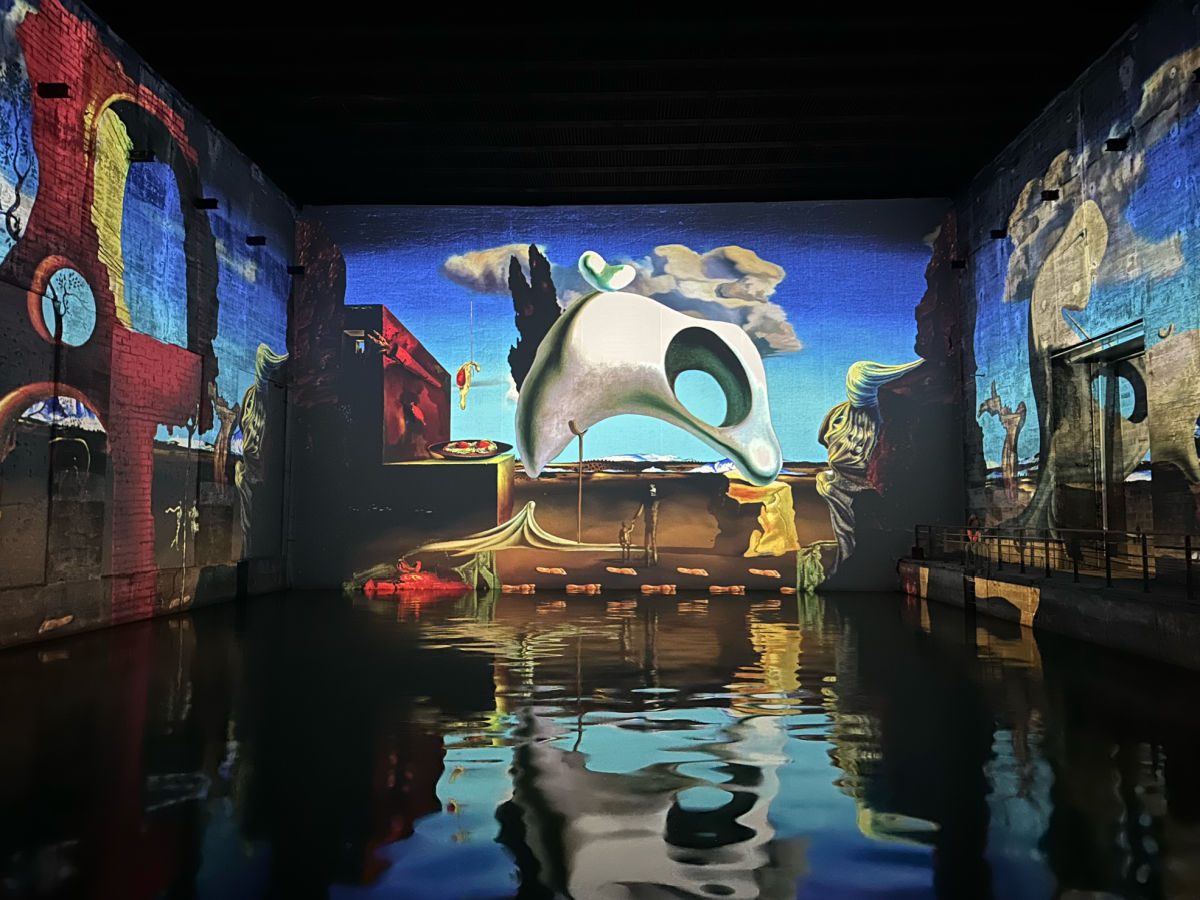
If you enjoy interactive art exhibits (think about Team Lab Planet in Tokyo or the Van Gogh interactive exhibits), you will love the Bassins des Lumiéres! This remarkable cultural venue breathes new life into a former World War II submarine base. Once a strategic naval facility, it has been transformed into an immersive art and light exhibition space and it serves as a canvas for mesmerizing multimedia shows that fuse art, music, and technology. The interactive art and light exhibits at the Basins des Lumières are nothing short of spectacular.
When I visited, they were putting on a show involving the art of Salvador Dali and Gaudi. There are gigantic digital projections that cover vast surfaces with ever-changing works of art. This was all set to music, which was especially impressive given the acoustics of the venue. Dali was set to the music of Pink Floyd and it was a perfect match for his somewhat bizarre and abstract art. It’s a captivating fusion of history and modernity, where the power of digital art meets the echoes of the past.
The only downside is that it is a bit of a pain to get to using public transportation. There is a bus that stops about 10 minutes away from the venue, or you can take a tram and walk for about 15-20 minutes. I would recommend getting tickets online in advance. The Bordeaux tourism office also sells a combination ticket that includes a shuttle service from the Place des Quinconces. Also, if you get disoriented in the dark, or have issues with flashing lights, this could be a problem for you. It takes a bit to get used to the darkness and follow the pathways around the large water basins that used to be submarine bays. If you walk through to the back though, there are bleachers where you can sit and watch the show for its entire 75-minute loop.
Eat Lunch at Les Halles de Bacalan
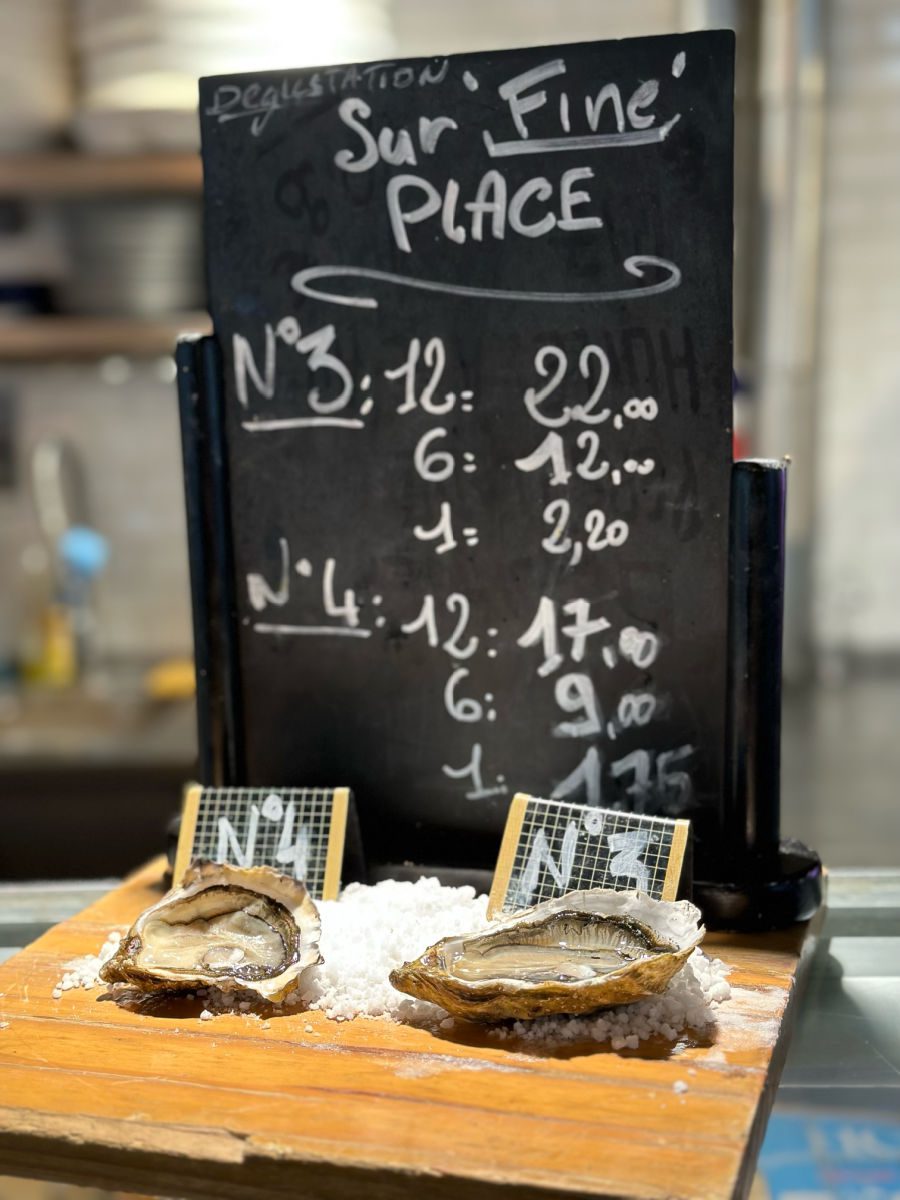
Located in the Bacalan district along the banks of the Garonne River, the Les Halles de Bacalan is a local market and food hall that embodies the city’s gastronomic spirit. Inside, you will find an array of stalls offering fresh seafood, artisanal cheeses, organic vegetables, and a wide range of delectable treats.
It’s a place where food lovers can savor the very essence of Bordeaux’s culinary scene, with options to enjoy a meal on-site or purchase ingredients to take home. I definitely recommend trying the local oysters! It is also the perfect spot to have lunch before heading across the street to the Cité du Vin.
Visit Cité du Vin
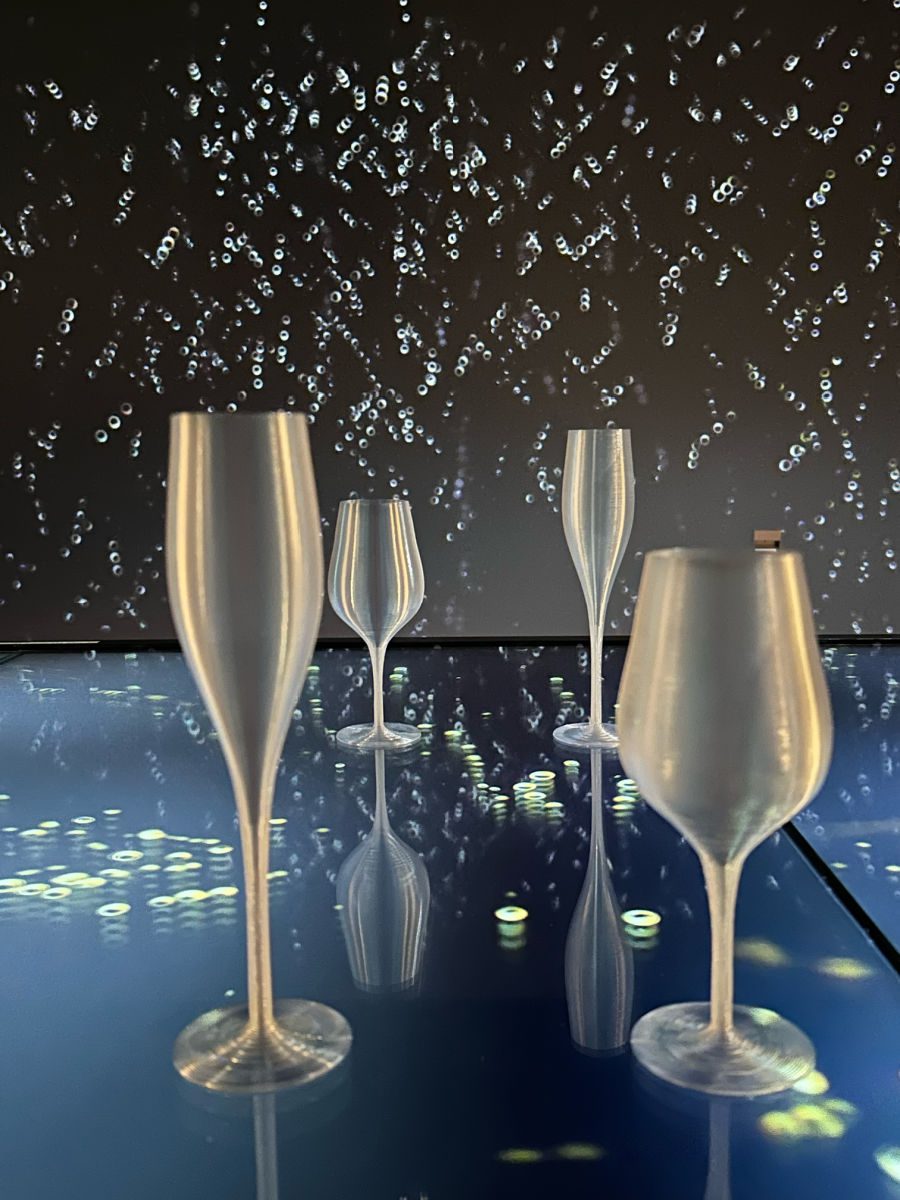
Shaped like a giant, modern wine decanter, the Cité du Vin opened in 2016 with a singular purpose—to celebrate the world of wine in all its facets. This avant-garde structure serves as a wine museum and cultural center, focusing on wines of the world, and not just those of Bordeaux.
Inside, there are interactive exhibitions that take you on a global journey through the history, culture, and science of winemaking. The museum showcases a somewhat overwhelming blend of multimedia presentations, sensory experiences, and informative displays that invite you to explore wine’s many dimensions.
Beyond the museum, you can also dine at the onsite restaurants, offering a diverse selection of cuisine, or visit the rooftop tasting bar that provides panoramic views of the city and the Garonne River while enjoying a selection of wines.
I would suggest that you purchase a timed entry ticket in advance and try to go on a day when there is not a large cruise ship in town (or go early to avoid crowds!) Because the exhibits don’t follow any particular storyline or timeline, I found it all a bit overwhelming with the crowds, and the interactivity, while cool, could be a little distracting.
If you would rather learn more about the wines of the Bordeaux region, you can also visit the Musée du Vin et du Négoce, which is dedicated to the city’s illustrious wine history and its historic role in the wine trade. Housed in an elegant 18th-century townhouse, this museum invites visitors to step back in time and explore Bordeaux’s vinous past. Inside, an extensive collection of wine-related artifacts, including vintage wine labels, cooperage tools, and antique bottles, offers insights into the wine trade’s evolution over the centuries.
Day Trips from Bordeaux
There are many other museums and such to see in Bordeaux, but this is about what you can fit into a three-day visit. If you have longer to stay in Bordeaux, I’d highly recommend taking a few day trips to go wine tasting and explore the region. Here are a few of the most popular day trips from Bordeaux.
Of course, another great way to see more of the region without having to worry about transportation logistics or arranging guides is on a Bordeaux river cruise with AmaWaterways.
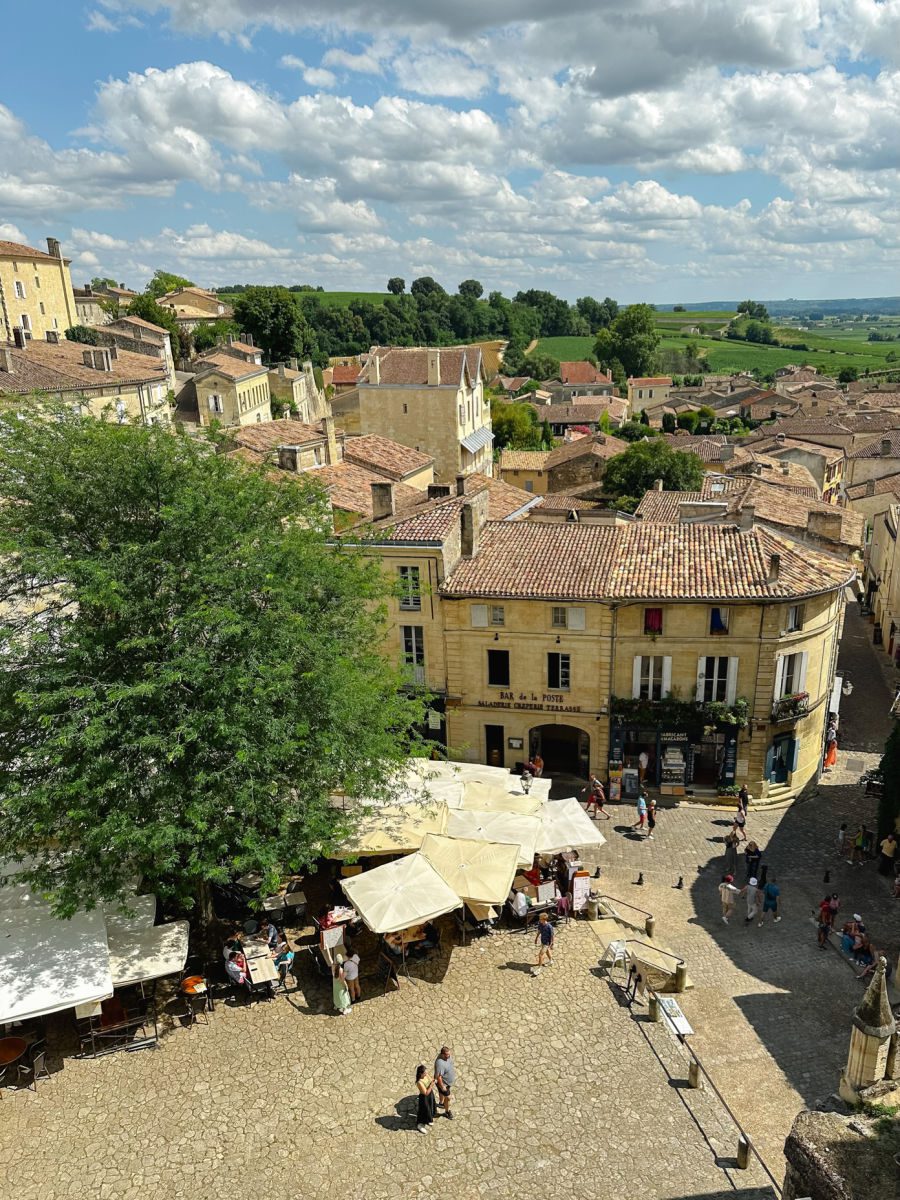
Saint-Émilion
Located just 40 kilometers east of Bordeaux, Saint-Émilion is a picturesque medieval village nestled in the heart of the Bordeaux wine region. Once in Saint-Émilion, explore its charming cobblestone streets, visit renowned wineries for tastings, and don’t miss the stunning underground catacombs and the awe-inspiring Monolithic Church, a UNESCO World Heritage site. Book a full-day Bordeaux to Saint Emilion tour with wine tasting and lunch!
Arcachon and the Dune du Pilat
Arcachon, about 55 kilometers southwest of Bordeaux, is a beautiful coastal town known for its sandy beaches and fresh oysters. Here you can visit the nearby Dune du Pilat, Europe’s tallest sand dune, offering panoramic views of the Atlantic Ocean, and explore the picturesque towns surrounding the Arcachon Bay. Another option is to take a boat trip to Cap Ferret, a charming fishing village, or visit the oyster farms on Île aux Oiseaux. Book a half-day tour to Arcachon with an oyster tasting!
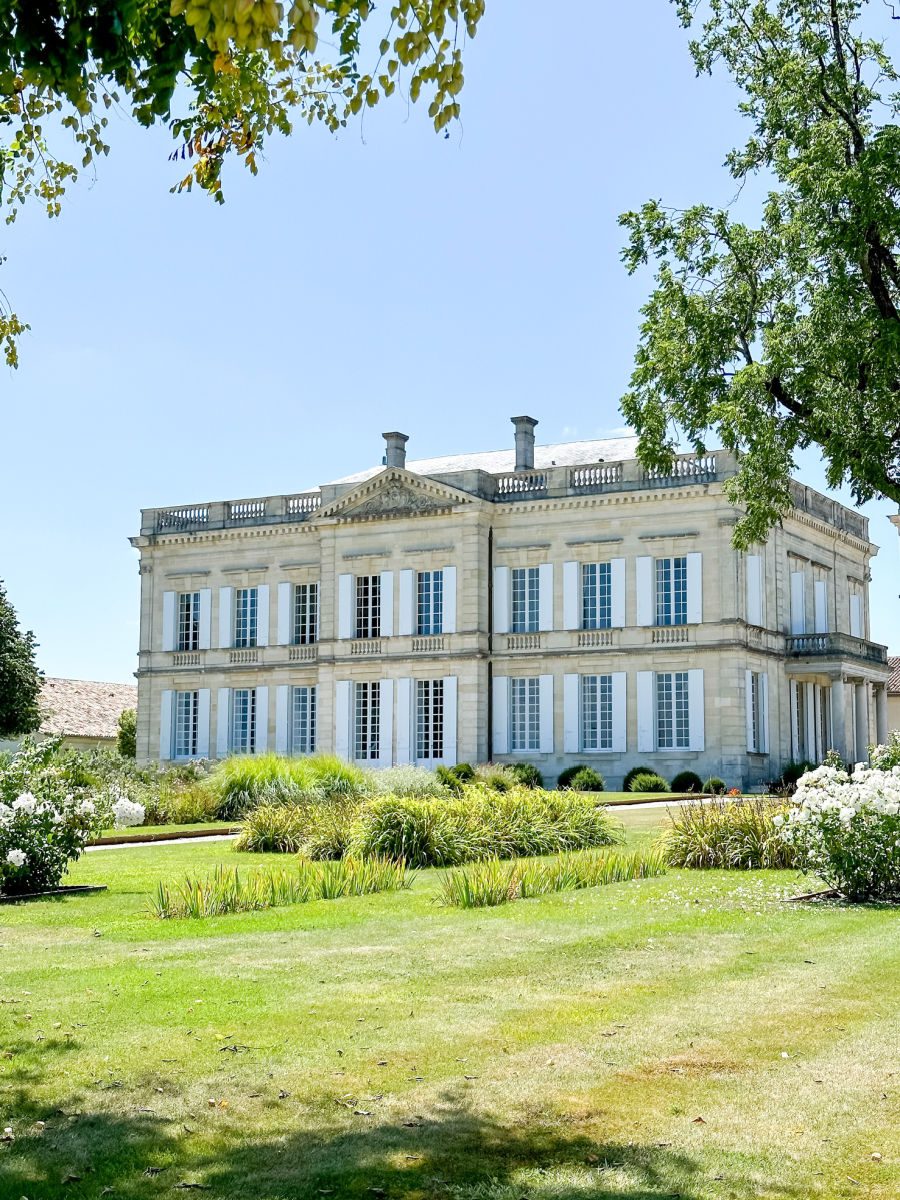
Medoc
Explore the wine-growing region of Medoc and get to know the “left bank” red wines, which are more Cabernet Sauvignon-forward. Follow Medoc’s famous Chateau Road, home to over 1,500 vineyards, and taste some of the best red wines in the area. Book a full-day wine tour of Medoc!
Périgord (Dordogne Valley)
Approximately 150 kilometers east of Bordeaux, the Dordogne Valley boasts picturesque villages, prehistoric cave art, and lush landscapes. Explore the medieval town of Sarlat-la-Canéda, visit the Lascaux Caves for ancient cave paintings, and savor the local cuisine in one of the region’s charming restaurants.
Getting to Bordeaux
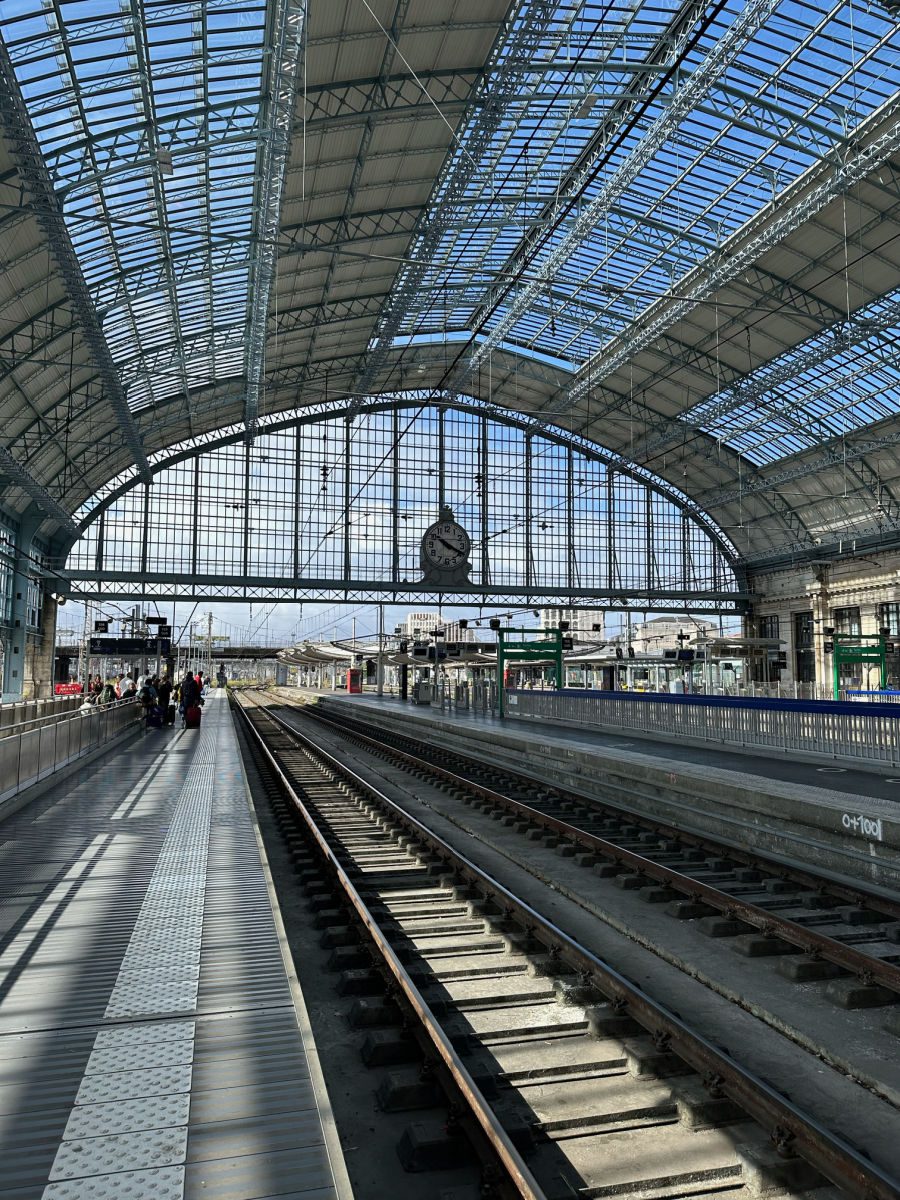
Getting to Bordeaux is fairly easy, thanks to France’s train system. However, now that France is moving to eliminate flights shorter than two hours, trains are even more crowded and you should book your ticket in advance. Trains from Paris leave from the Gare Montparnasse train station and it is about two hours to Bordeaux Saint Jean on the TGV INOUI service.
I’d recommend downloading the SNCF app to purchase tickets and easily save your ticket to your mobile wallet. The app also sends alerts if your train is delayed, what platform it is departing from, and when it is ready to board. Plus, since the announcements on the train are in French, it is helpful to track the progress of your route so that you know when your stop is approaching. Just keep in mind that if you book a seat on the top floor of the train, you need to carry your luggage up a narrow staircase.
Luckily, both Gare Montparnasse and Bordeaux Saint Jean have lifts to the platform, but in Bordeaux, you may still need to carry your bag up or down some stairs depending on where you come in. Once you arrive at the Bordeaux Saint Jean train station, you can take a bus, tram, or taxi into the city center. Google Maps is quite helpful in determining the best options.
You can also fly into Bordeaux from outside of the country. Most flights will connect through Paris’ Charles de Gaulle airport. I’d recommend leaving at least 1.5 hours as a layover to have time to clear immigration and passport control (longer during busy travel times.) Flights arrive at the Bordeaux-Merignac airport (BOD), which is about 25 minutes outside of the city center.
One thing to keep in mind is that traffic around Bordeaux has gotten quite bad in recent years as many people have moved to Bordeaux from Paris for cheaper housing. You can take a shuttle or taxi from the airport to the city center. I usually use Welcome Pickups to arrange a transfer in advance so I don’t need to worry about waiting for a taxi.
Where to Stay in Bordeaux
When choosing where to stay in Bordeaux, I recommend staying within the city center in either the Old Town or Saint-Pierre neighborhood or the Chartrons neighborhood. Saint-Pierre and Saint Paul district is the city’s heart and where you will find some of the most beautiful landmarks, shopping areas, and restaurants. It can get a little touristy, especially along the pedestrian Rue Saint Catherine, but you will also see plenty of locals gathering in squares and outdoor cafes.
The Chartrons district is what locals refer to as “bo bo” or bohemian bourgeois, with an affluent, young demographic. This leafy neighborhood offers tons of restaurants frequented by locals, antique shops, boutiques, and bars. Plus it provides easy access to the port or the historic city center. The Saint Michel quarter is another option if you are looking for something less touristy but still close to the city center. It is a popular neighborhood for recent immigrants from North Africa so you will find some interesting markets, bakeries, and a more diverse community.
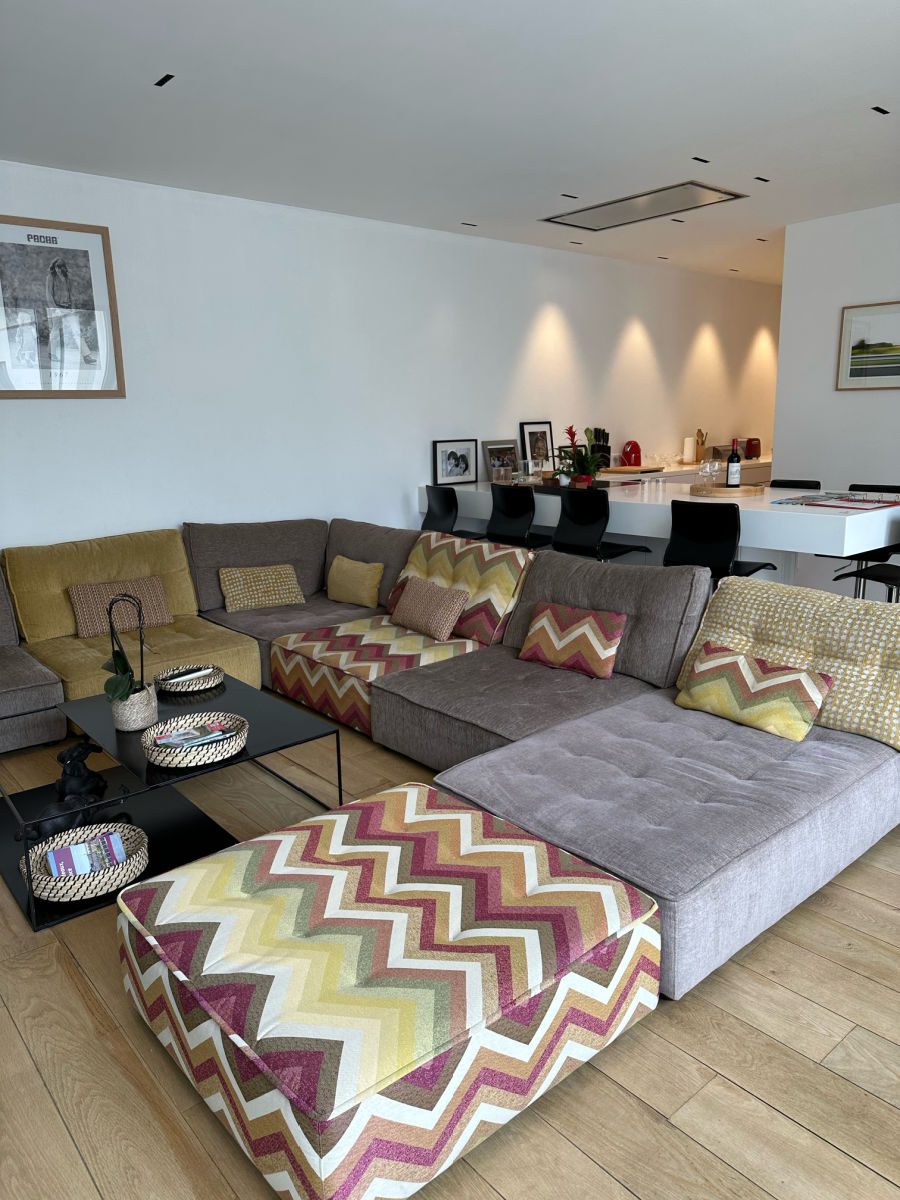
I stayed in a fabulous two-bedroom Airbnb, just off Rue Saint Catherine in the city center, and thought it was perfect. However, if you are looking for a hotel, I would recommend the Intercontinental Bordeaux, for a luxury stay in the heart of the city right across from the Opera House. Also, right around the corner is the Best Western Premier Hotel Bayonne Etche Ona, which was recommended by one of my tour guides. I wouldn’t recommend staying near the train station, as it isn’t in a great neighborhood for exploring.
Find other accommodations in Bordeaux:
Getting Around Bordeaux
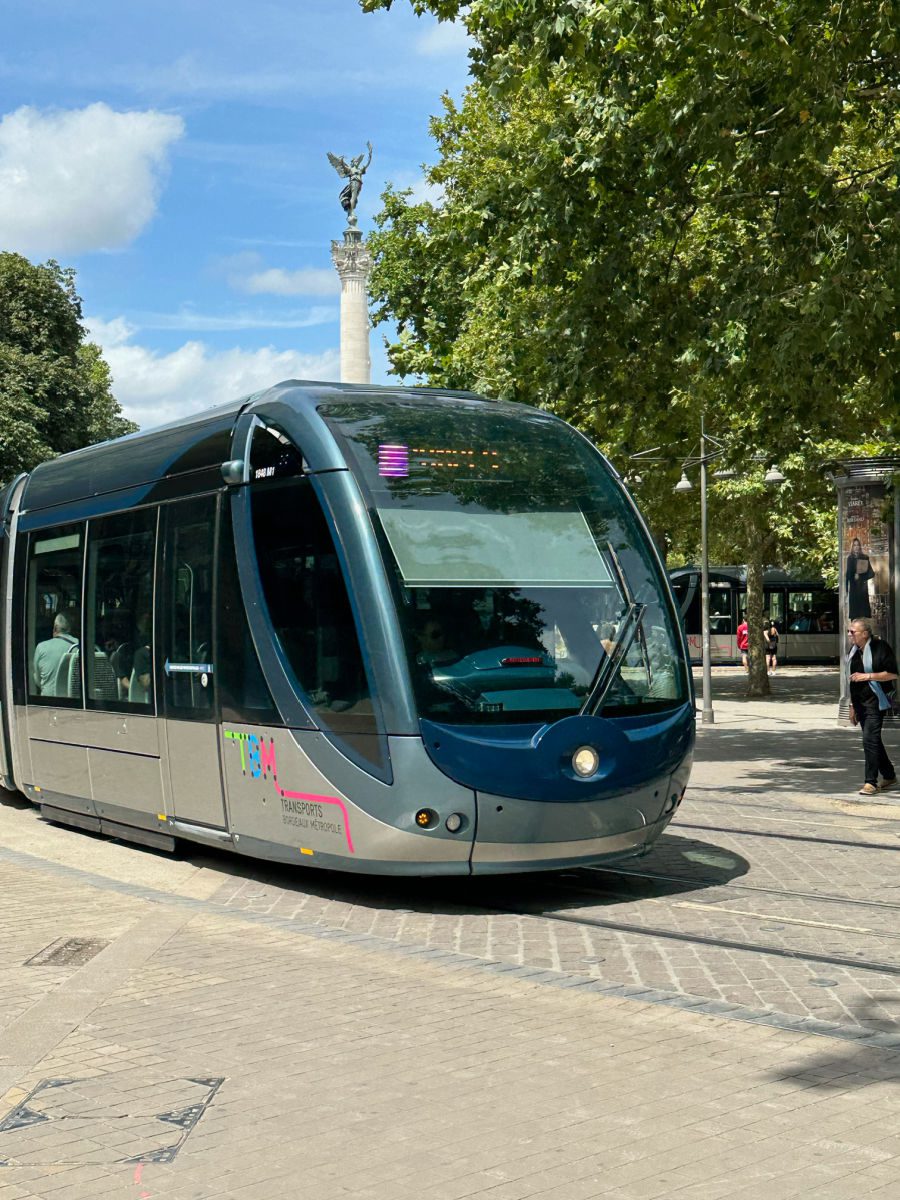
As I mentioned before, I was warned by many locals that traffic in and around Bordeaux can be a bit horrendous so it is best if you can avoid Uber or taxis if you can. I found the Bordeaux tram system incredibly easy to use.
One ride is only 1.80€ (including any transfers), or you could buy a day pass for only 5€ if you plan on moving around a lot. You purchase the tickets at a kiosk at the tram stops and there is an easy-to-follow English screen option. Once you board the tram, you need to validate your ticket by tapping it against one of the sensors near the doors. The stops are well-marked and it is easy to use, even if you don’t speak French.
Where to Eat in Bordeaux
Since I visited Bordeaux in the middle of my month in France (in between my barge cruise through Burgundy and river cruise with AmaWaterways), I made a point of seeking out more than just French food and since Bordeaux is such a cosmopolitan city, it wasn’t hard to find a variety of cuisines. Here are a few restaurants that I would recommend in Bordeaux, as well as suggestions I collected from locals:
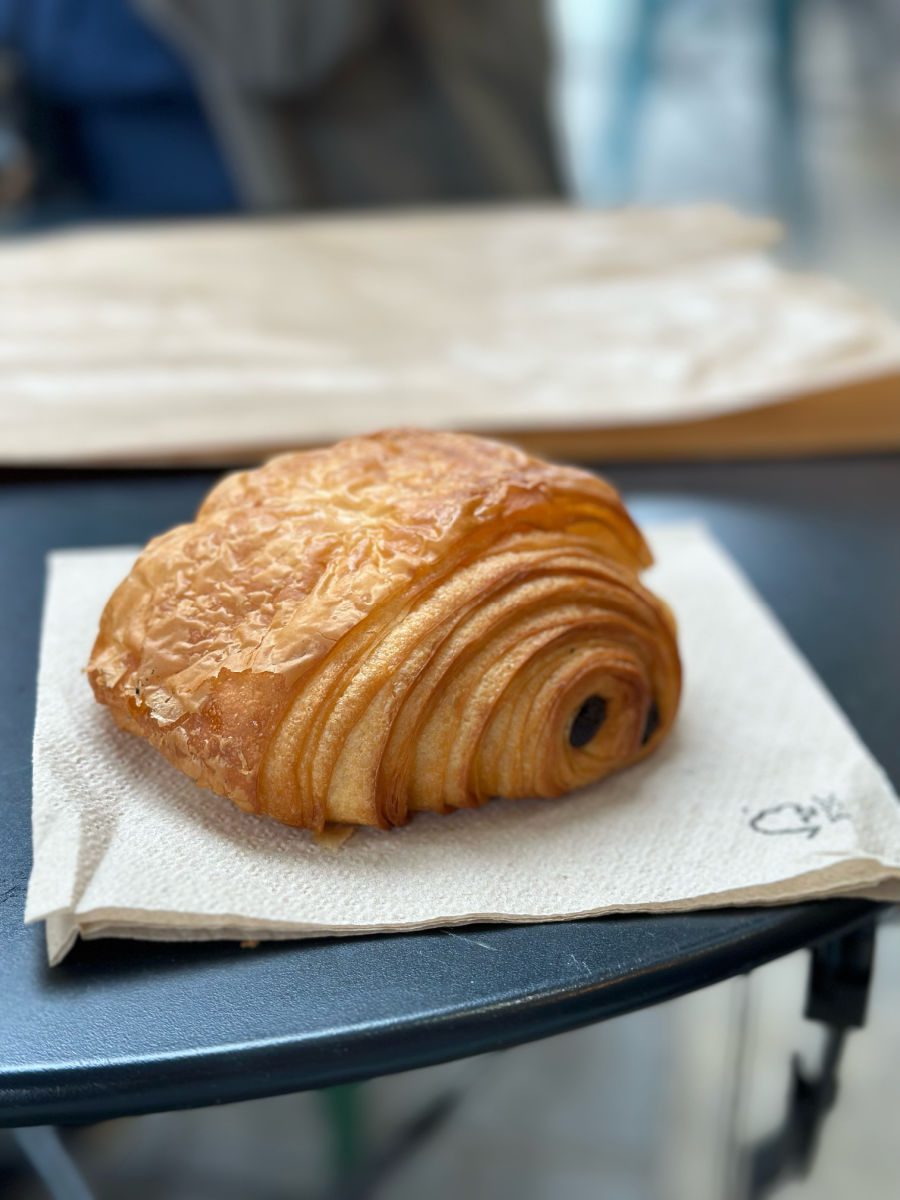
- Avant Comptoir du Palais — we had previously eaten at Avant Comptoir in Paris so we knew we were in for delicious food. Avant Comptoir is known for light bites and great wine. With a location in the square in front of Porte Cailhau, it is also a great spot for people-watching and hanging out with locals
- Echo – also near Porte Cailhau, this was recommended by my Best Boulangerie tour guide for more modern French cuisine.
- El Nacional – in Chartrons this Argentinian steak house is where to go if you are in the mood for an excellent, wood-grilled cut of meat. Plus it has a great location just off the central square in the Chartrons neighborhood. We had such a good meal here on our last night in Bordeaux.
- Frida – located near Gros Cloche in the city center, Frida has a charming courtyard and a great selection of cocktails and tapas. Alternatively, you can order the prix fixe menu.
- Chez Dupont – one of our tour guides on our river cruise lives in the Chartrons neighborhood and he suggested Chez Dupont for a more traditional French meal.
- Le Bocal de Tatie Josée – makes an excellent croque monsieur with truffle and is perfect for lunch!
- Fromagerie Chez Delphine – is an amazing cheese shop that also offers a full menu for a good lunch spot or cheese tasting.
- Boulangerie Louis Lamour – this bakery has the best chocolatine (what they call pain au chocolat in the south) I had during my entire month in France.
- Cassonade and Le Boulanger de L’Hotel de Ville – make the best homemade cannelles that I had while in Bordeaux. Avoid those places with red awnings that are much more commercial and not as freshly made.
- A few other places that I made note of that didn’t get to try include: Le Berthus, Gustave Creative Street Food, Umami Ramen Bordeaux, and The Breakfast Club (this was right next to my Airbnb).
- Some others I tried included Les Moules du Cabanon for Belgian-style mussels with great people watching near the river, Delizia da Bartola for Italian, and Bao Burger for a fun twist on a hamburger.
Traveling to France?
Save this to Pinterest


Tamara Gruber is the Founder and Publisher of We3Travel. A former marketing executive and travel advisor, Tamara is an award-winning travel writer and recognized expert in family travel. Tamara is a member of SATW, NATJA, IFWTWA, and the Adventure Travel Trade Association, and serves on the Board of the Family Travel Association. She is also the publisher of YourTimetoFly.com and the co-host of the Vacation Mavens travel podcast.


